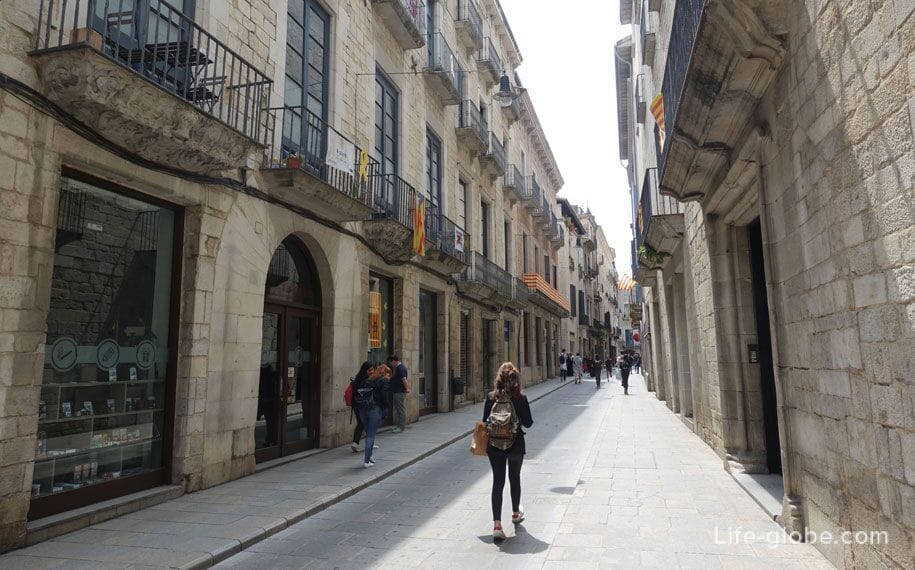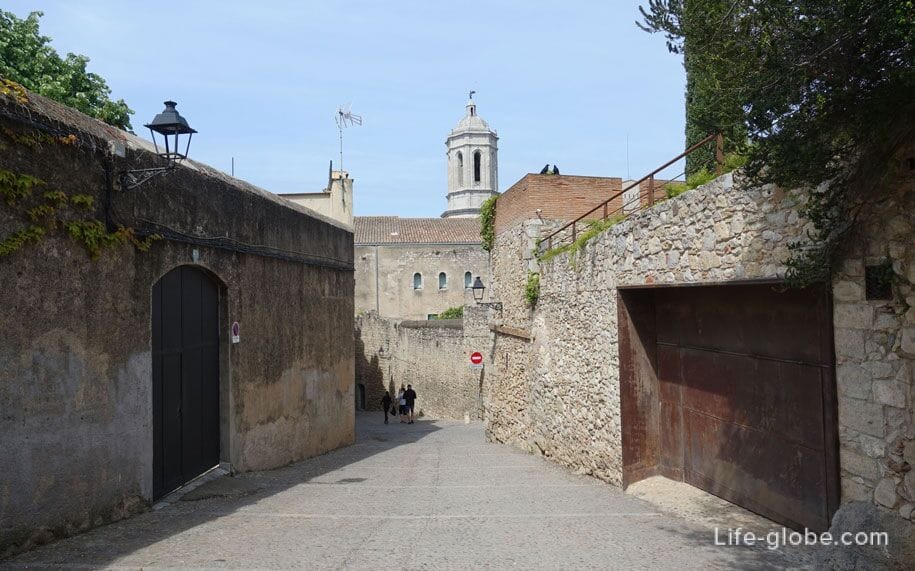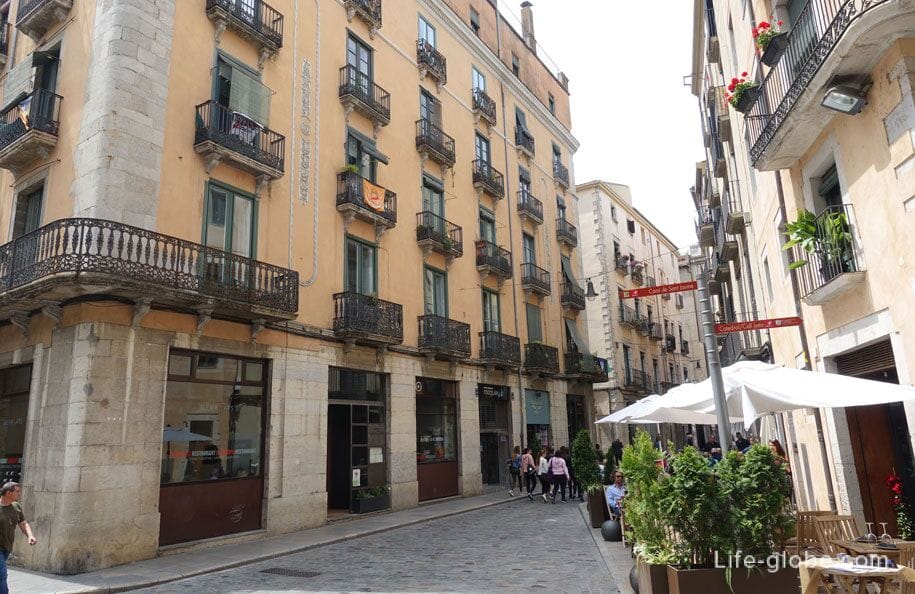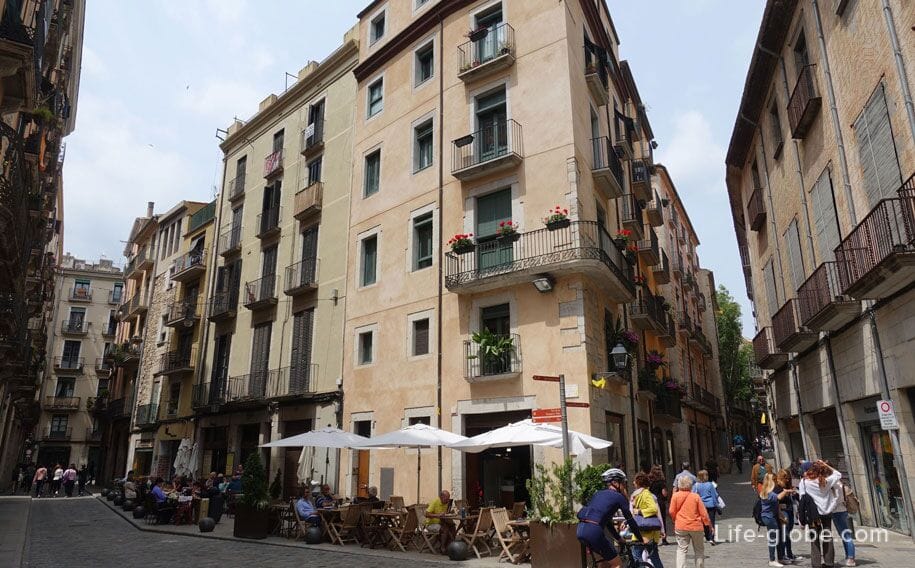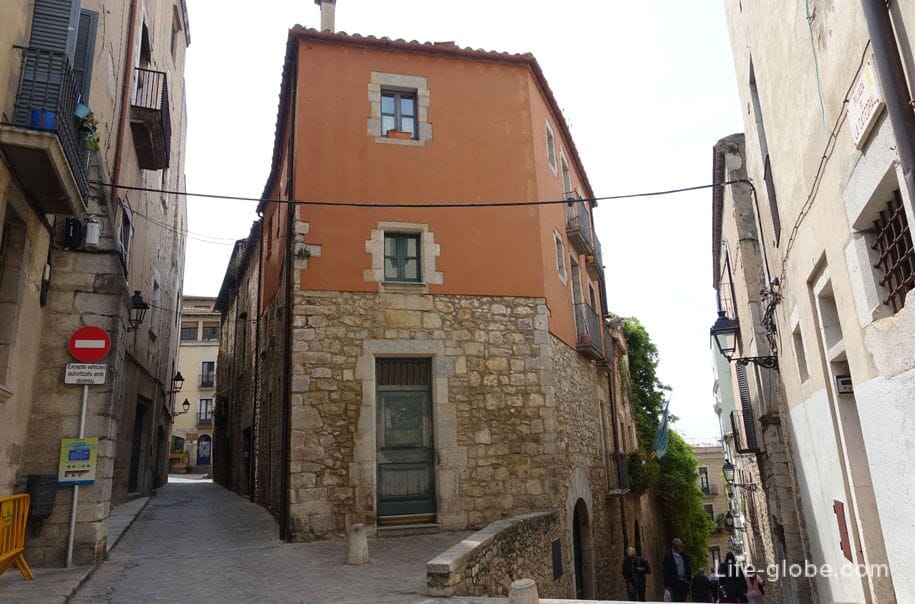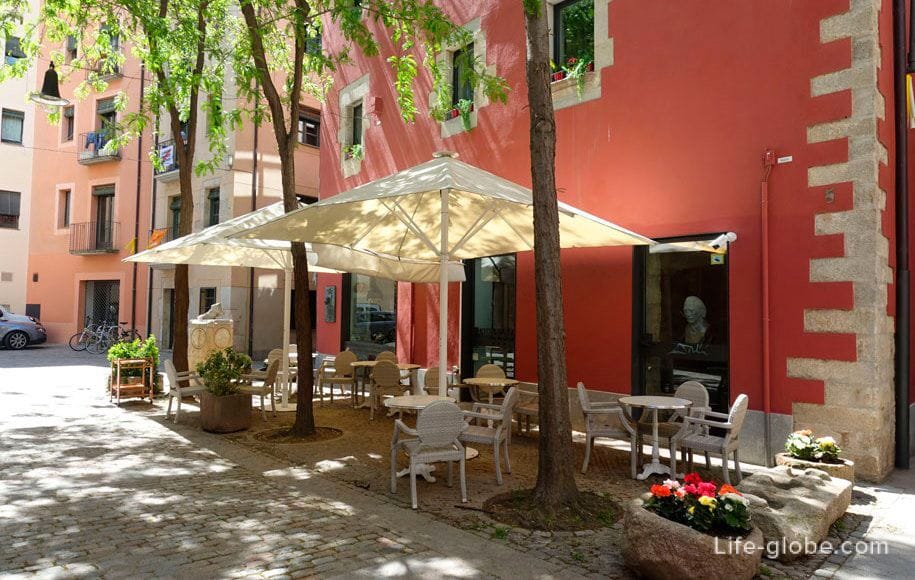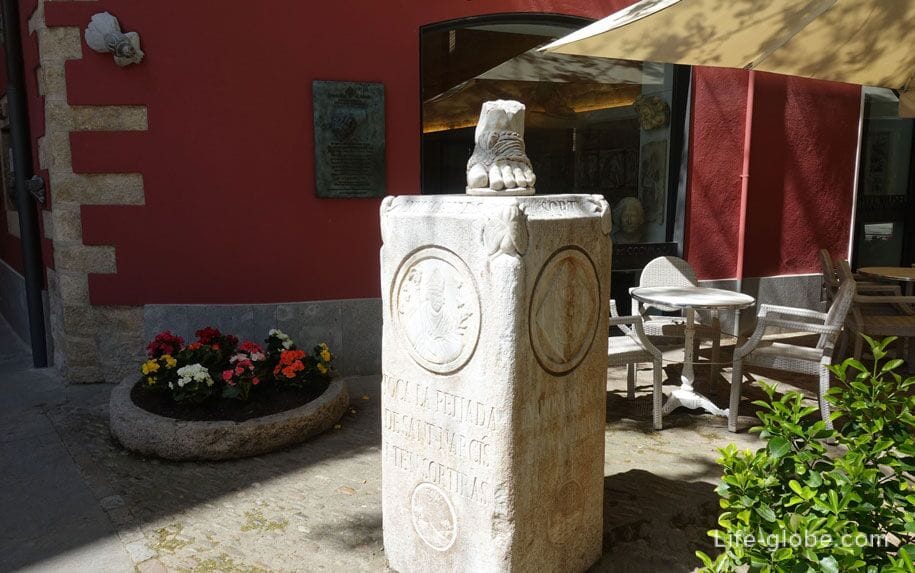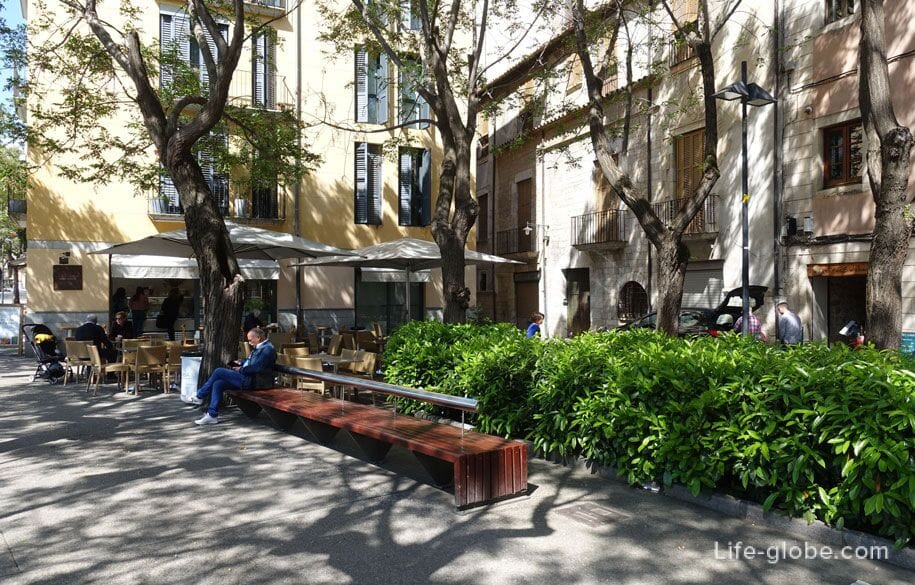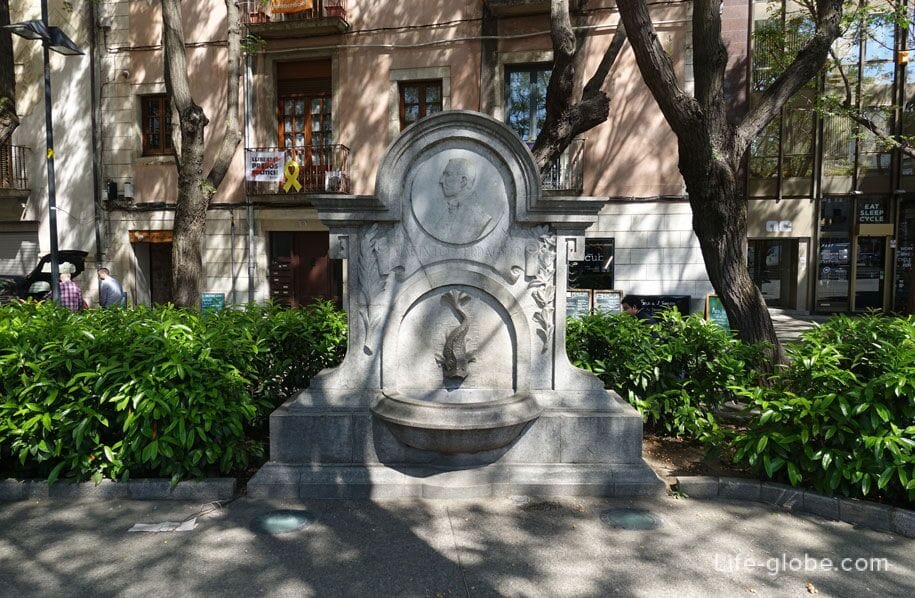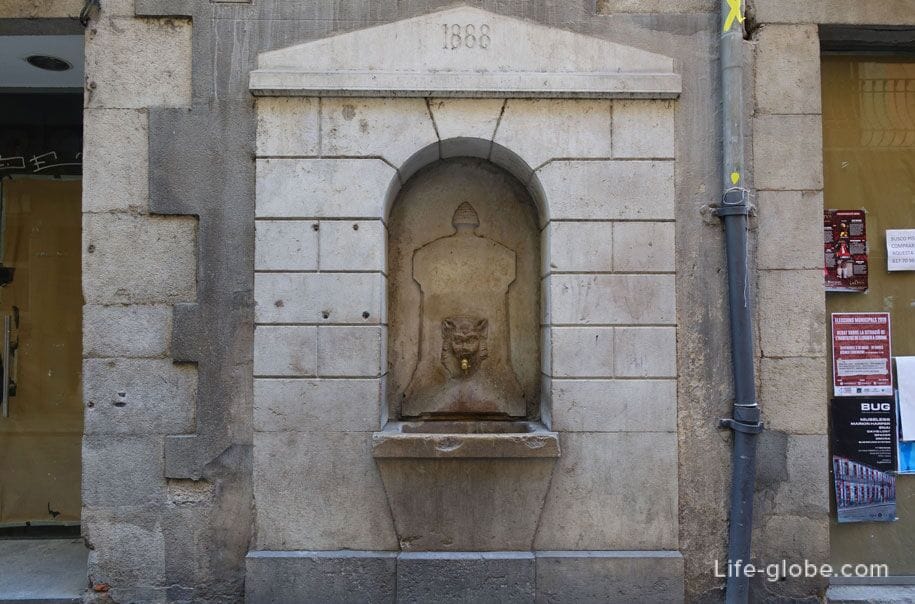
The historic centre of Girona is the core of the city known as old town, the Barri Vell, which translated from Catalan means "the old quarter".
The old quarter of Girona reflects more than 2000 years of city history, originating from the Roman era, which has a pronounced medieval footprint, and a more modern tone, reflected in the restorations and a few changes.
Old town Girona is the most well-preserved medieval old town in Spain and one of the most interesting in Catalonia.
It is in the old quarter of Girona's main tourist flows life. Here narrow streets and small squares, among which concentrated the bulk of the attractions in Girona, including all the most important artistic heritage of the city.
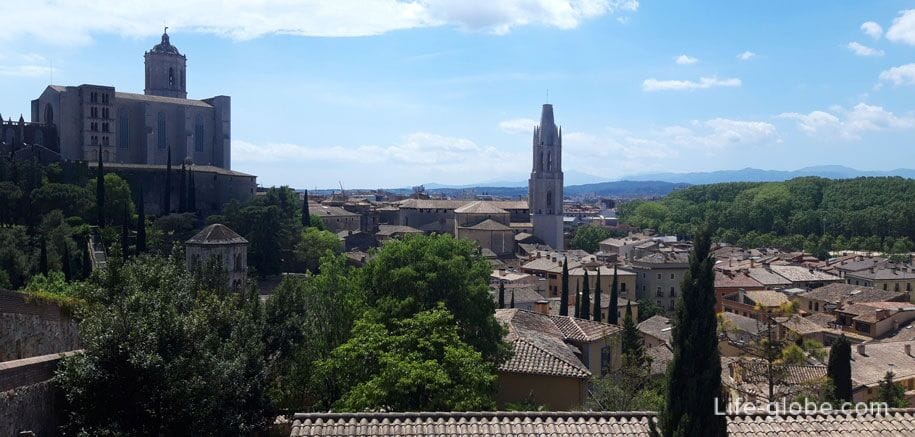
With the Northern, Eastern and partially southern sides, the old quarter of Girona surrounded by the former city walls.
In the South of the old town ends at Plaza Catalunya, and to the East limited by the river Onyar.
The wall of Girona (Muralla de Gerona) is a former defensive fortification, consisting of walls and towers surrounding an ancient, and later medieval town, which have historically played an important role in the defense of the settlement from invaders.
Currently, the wall of Girona is one of the main attractions of the city and is a separate tourist route. On the wall you can walk.
The complex of walls of Girona includes several observation and defensive towers, some of which you can climb. With walls and towers offers panoramic views of the old quarter of Girona, as well as a new part of the city and the surrounding area. Read more about the wall of Girona...
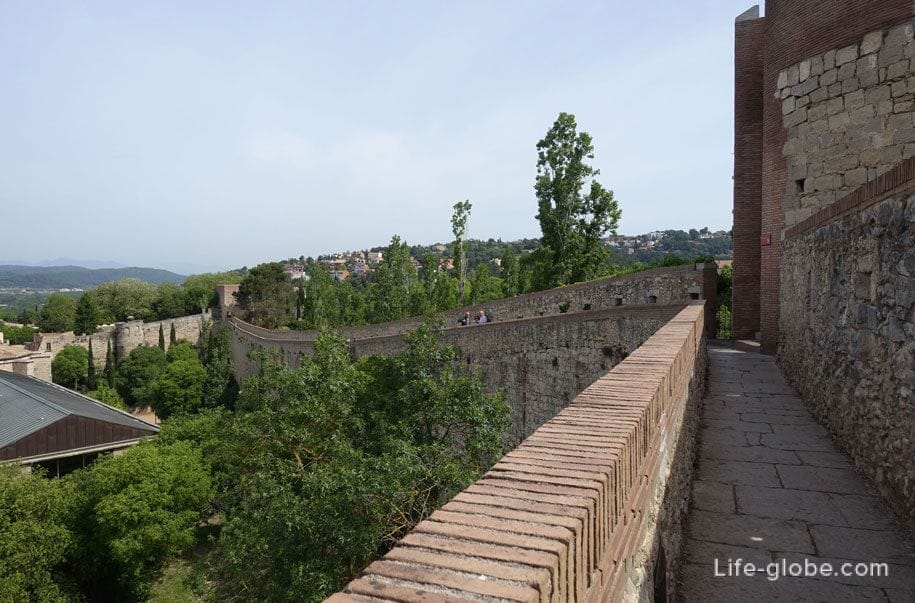

Plaza Catalunya (Plaça de Catalunya) is a small square located in the heart of Girona and visually presenting a wide bridge over the river Onyar.
On the square: a bed of flowers and a fountain, places to stay and a monument to the Catalan writer, Prudence Bertrand.
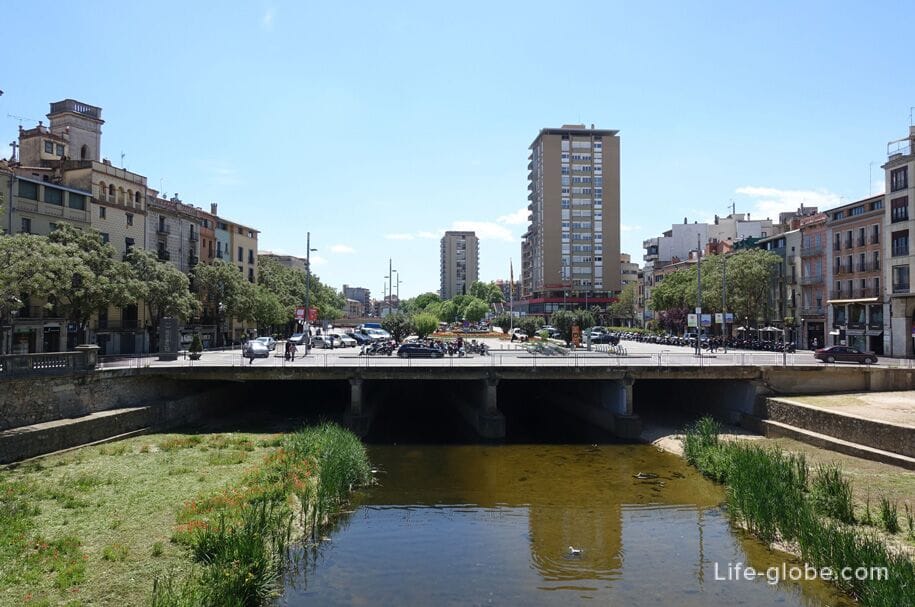

From Plaza Catalunya and to the North, along the old city, runs that part of the Onyar river (Riu Onyar), along which dense, located near the colorful houses overlooking the river.
The houses were built for many years and give the appearance of a small Mediterranean town.
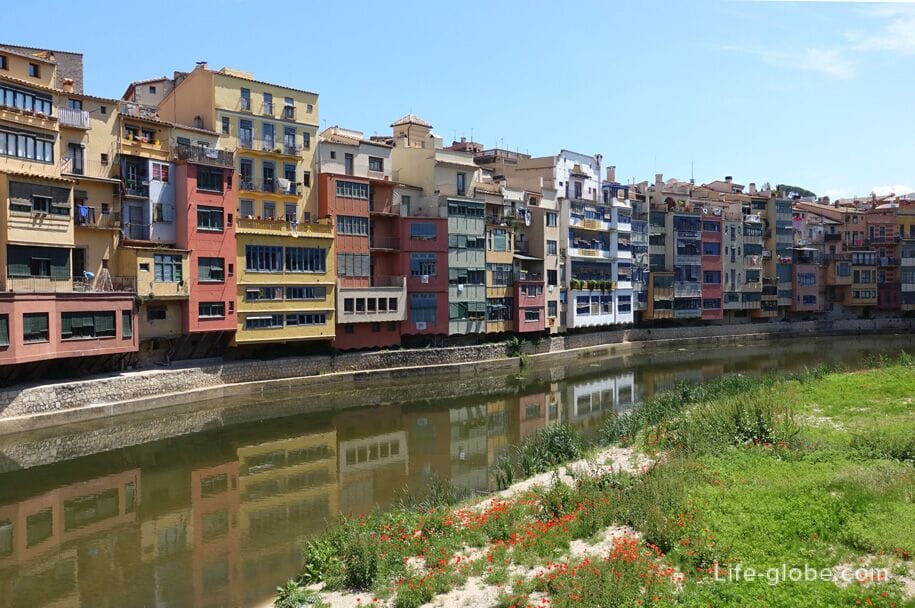
Onisr the river crosses several famous bridges connecting the old quarter (on the East Bank) the modern city (Western part): Pedra bridge, Eiffel bridge, the bridge of Gomez and the bridge of Sant Feliu.
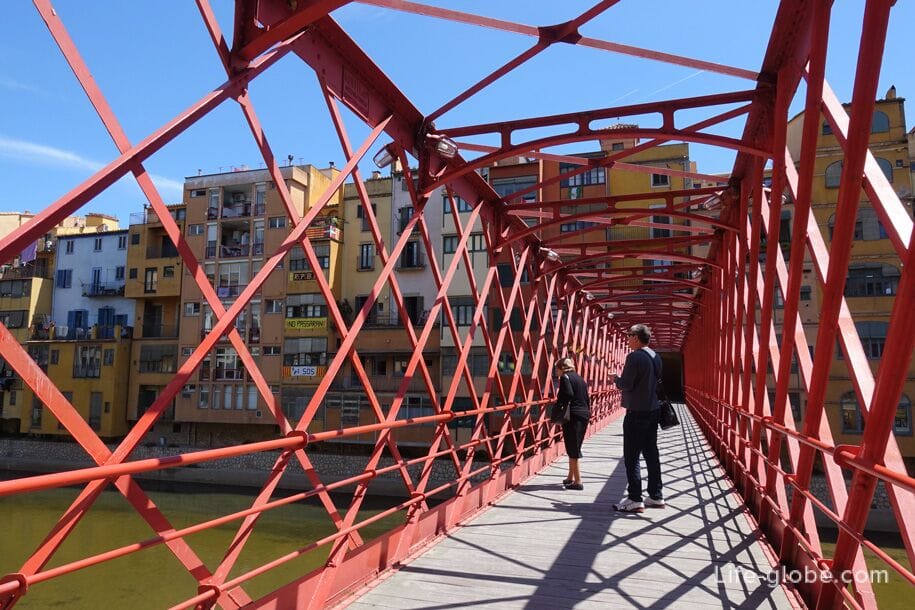
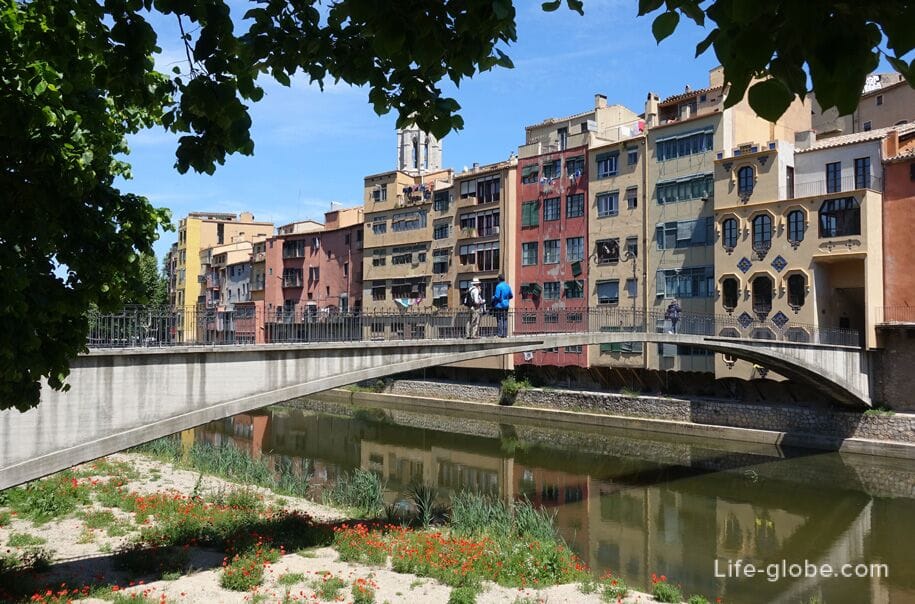
Bridge of Sant Agustí and Gomez, from the old city, is one of the famous houses in Girona - the house of Masks or Casa Maso (Maso Casa) - the birthplace of the architect Rafael masó and an example of Features in Girona.
This is the only known houses on the river, open to the public. The house was saved with the furniture and furnishings of the 19th century-style Features. Read more about the houses and bridges of the river Onyar...
View of the house of the Issa from the river Onyar
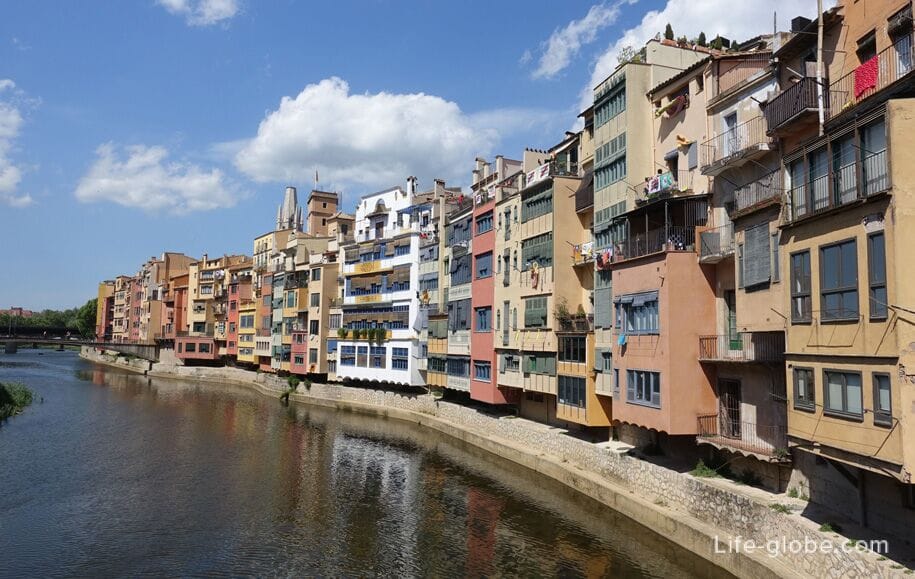
View of the house of the Issa from the old town

The streets of the old quarter of Girona is always crowded, and represent the labyrinths, that the direct and wider, the winding and narrow streets and stairs, that are also streets.
Along the dense streets of the historic buildings on the first floors of which are shops, cafes and restaurants with tables under the open sky.
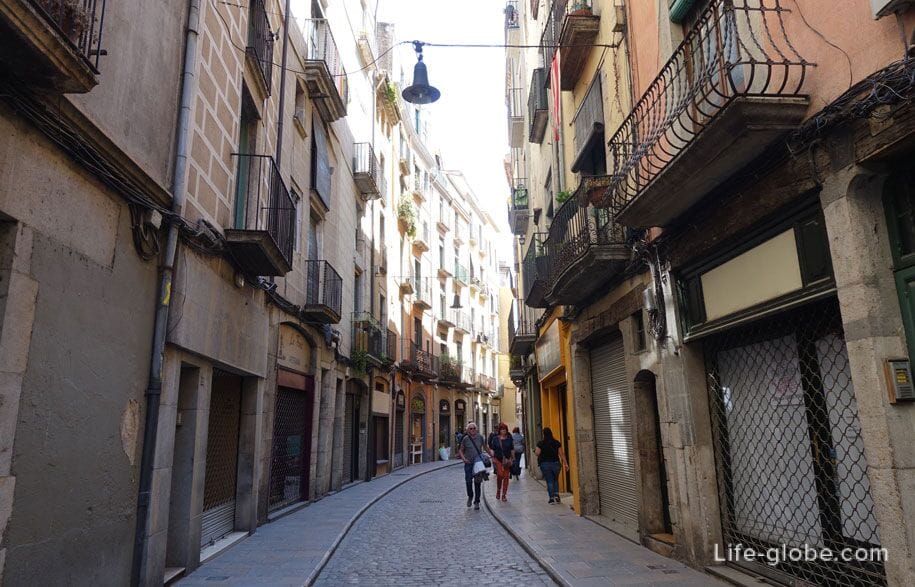

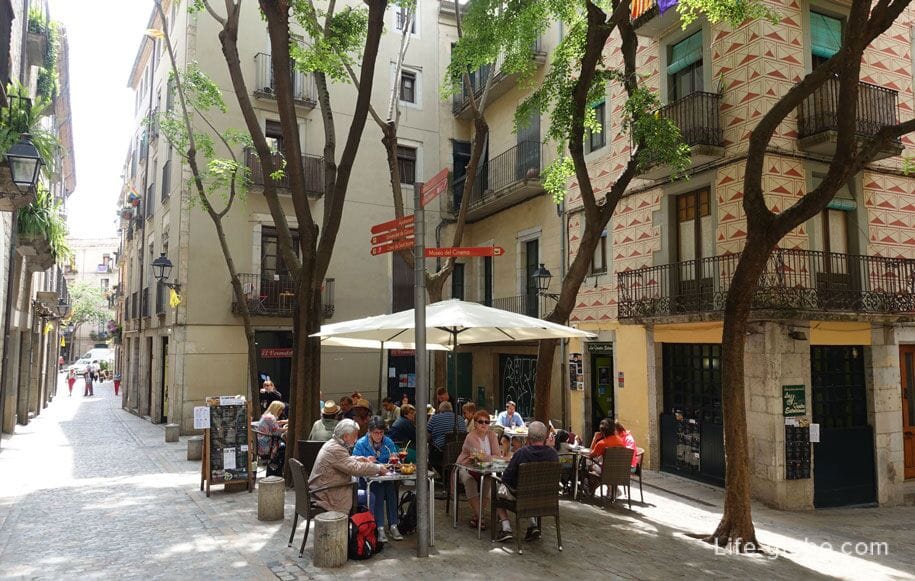
The main street of Girona's old town is the Rambla same La Llibertat, often shortened to just La Rambla (Rambla de la Llibertat).
The length of the street is a little more than 200 meters. The street runs from Plaza Catalunya to the intersection with the street Besado (Carrer Besado).
Las Ramblas is notable 19th century buildings, which appeared on the ruins of the city wall and the old market square.
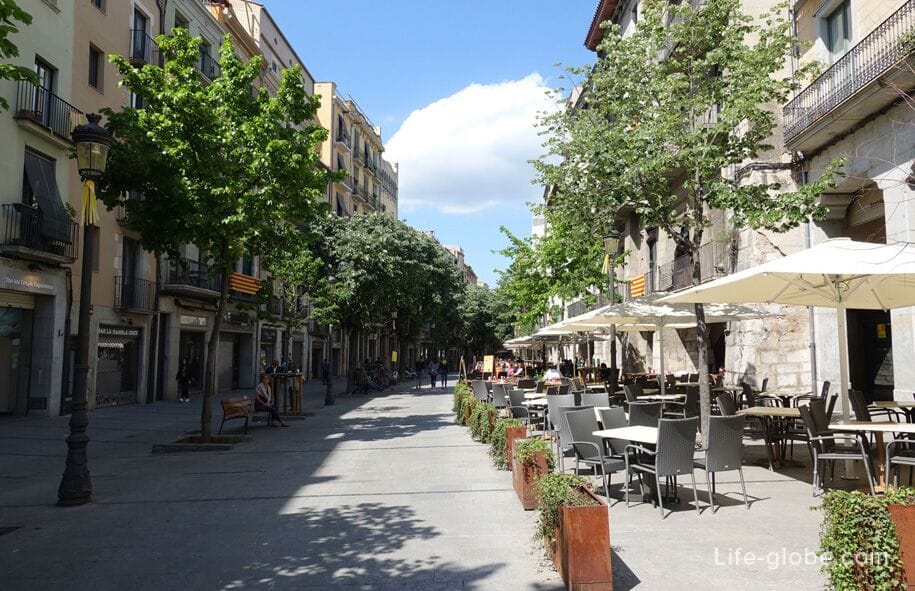
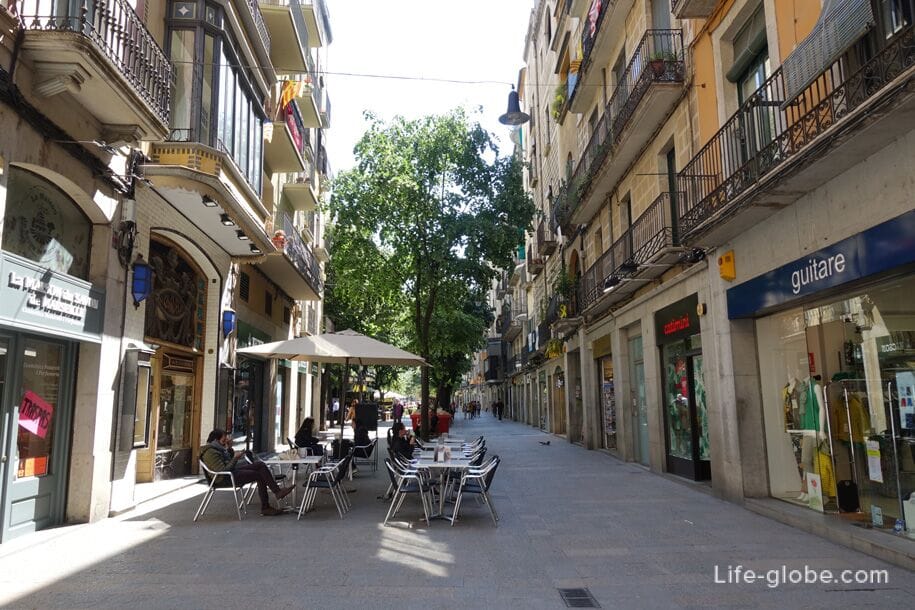
Among the buildings of the Rambla is especially remarkable house Norat (Casa Norat) with a modernist façade (1912). Read more about Rambla same La Llibertat in Girona...
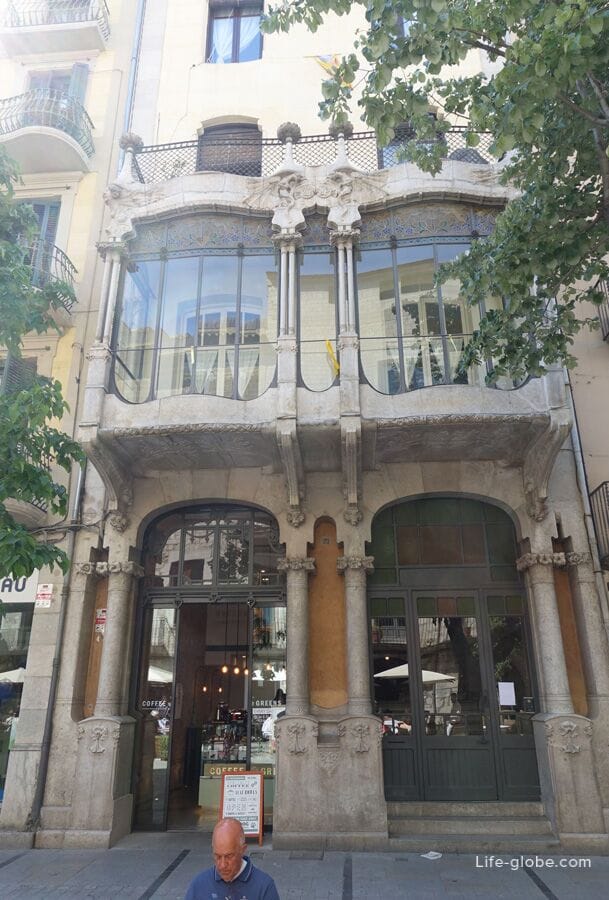
The main and most recognizable attractions of Girona is the Cathedral.
Girona Cathedral (Catedral de Girona) or the Cathedral of Saint virgin Mary (Santa Maria / Catedral de Santa Maria) - the main Shrine and one of the most exquisite jewelry Girona.
The Cathedral was built between the 11th and 18th centuries. Includes a number of walls and spaces in different styles, mainly Gothic and Romanesque (the cloister and tower of Charlemagne) and Baroque, embodied in the facade and the wide steps leading to the main entrance to the Cathedral.
The most characteristic features of the Cathedral are:
- a large Gothic nave (15th and 16th century) having a width of 23 meters and is one of the most extensive of its kind in the world;
- stairs of the Cathedral, built between 1686 and 1699 years, with ninety steps divided into three sections, and a stone balustrade on each side.
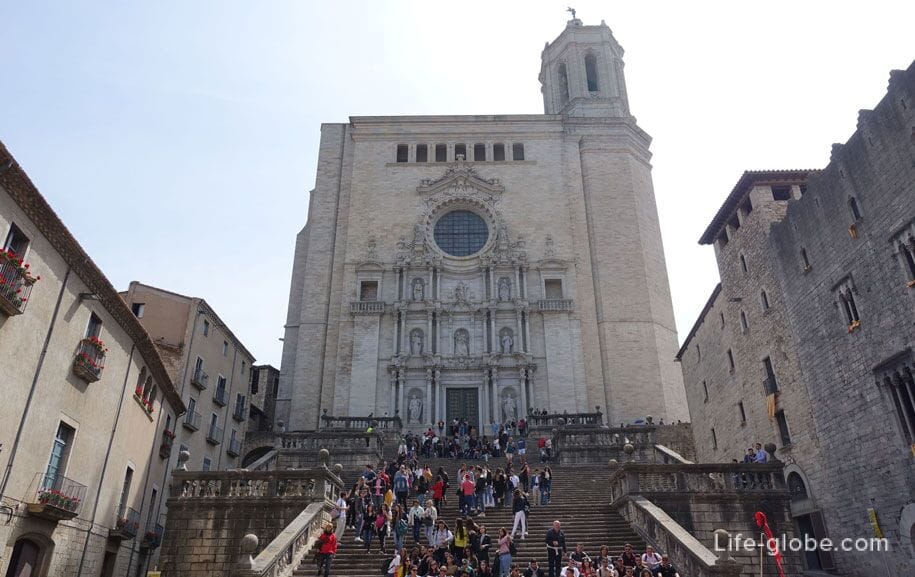
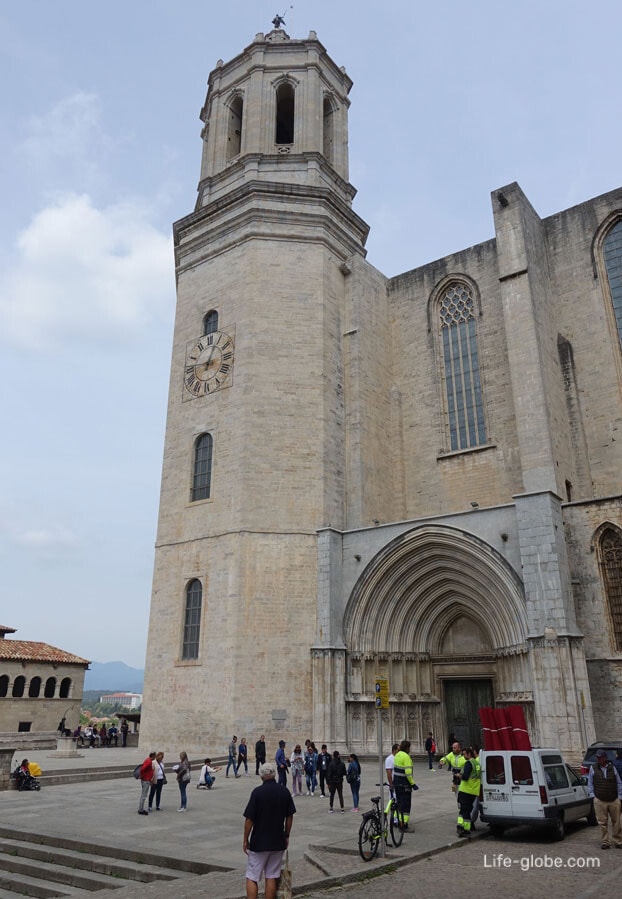
Views of Girona Cathedral from the walls
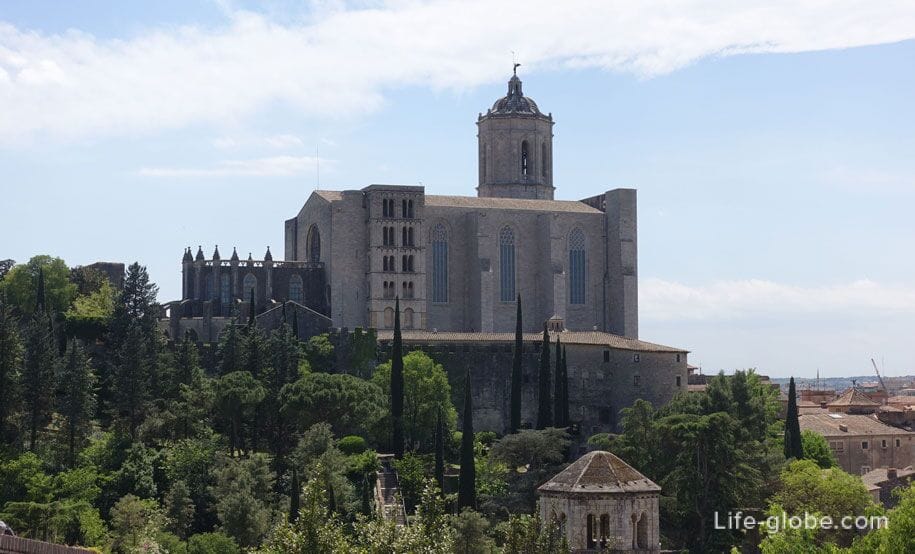
The Cathedral has a single nave, which is the second largest in the Christian world after St. Peter's Basilica in Rome.
The Cathedral can be visited for a fee, in combination with other attractions located near the Cathedral:
Cathedral + Church of St. Felix. Admission price: 7 euros + audio guide; seniors (+65 years) and students (16 – 24 years) - 5 euros + audio guide; children (8 - 15) - 1, 2 euros; children up to 7 years old - free of charge;
Cathedral + Church of Saint Felix + the Girona art Museum: adult ticket - € 10; seniors (+65) and students (16 - 24) - 8 EUR + audio guide; children (8 - 15) 3€; children up to 7 years old - free of charge.
Girona Cathedral is situated on the Sobornaya square (Cathedral square / Placa de la Catedral).
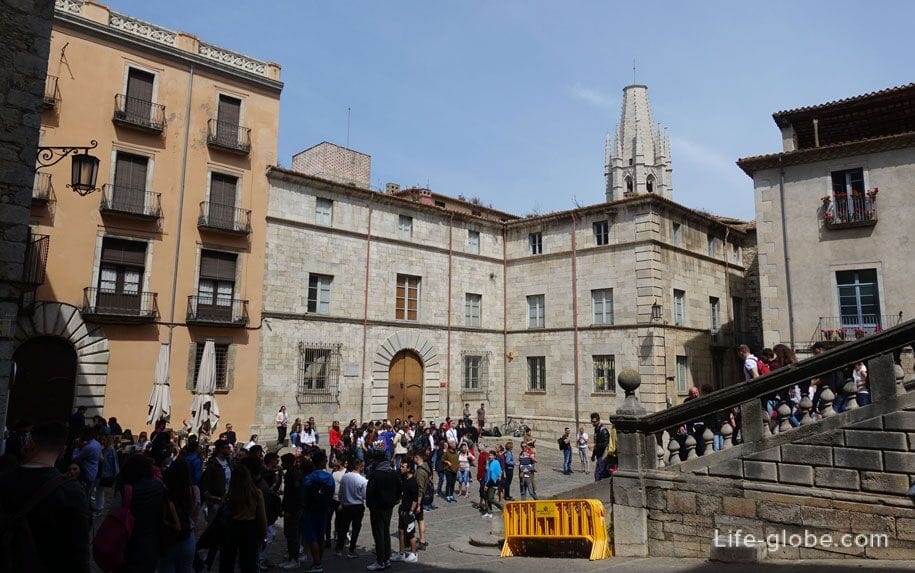
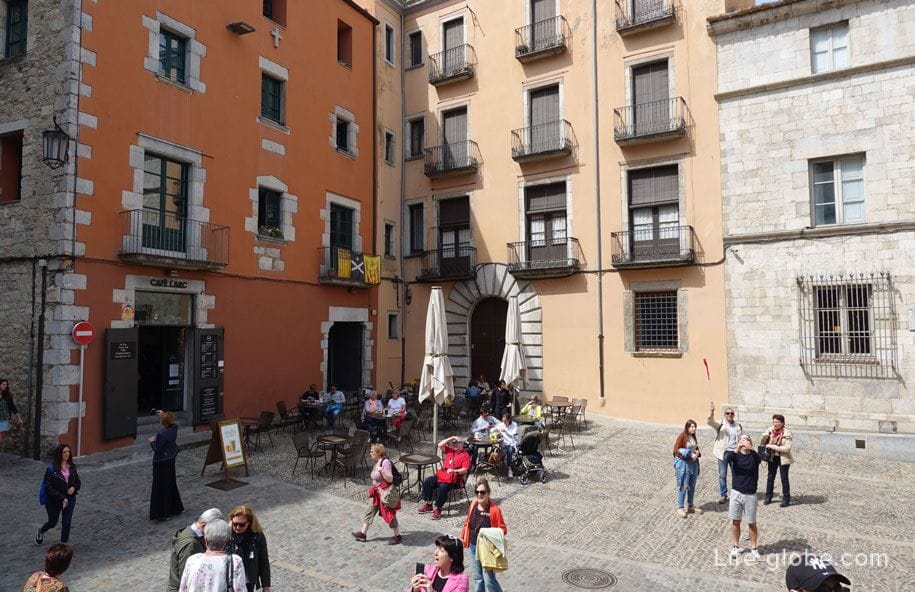
On the Cathedral square is also notable:
- house of Almoina Pia (Pia Almoina), Dating back to 1238 and is a Prime example of Gothic architecture with its arched portals and feature Windows, the number of which is growing from the bottom up, and the size decreases.
On the main facade of the house is the image of the virgin Mary de La Pia Almoina (15th century);

- the house of the priests (Casa Pastors / Casa Pastors), 18th century. Admission is free;

- arched doorway, part ryadomstoyaschih buildings and clearly describes the Roman part of Girona's old town - district of Vella Forsa (Forsa Vella / Forca Vella).
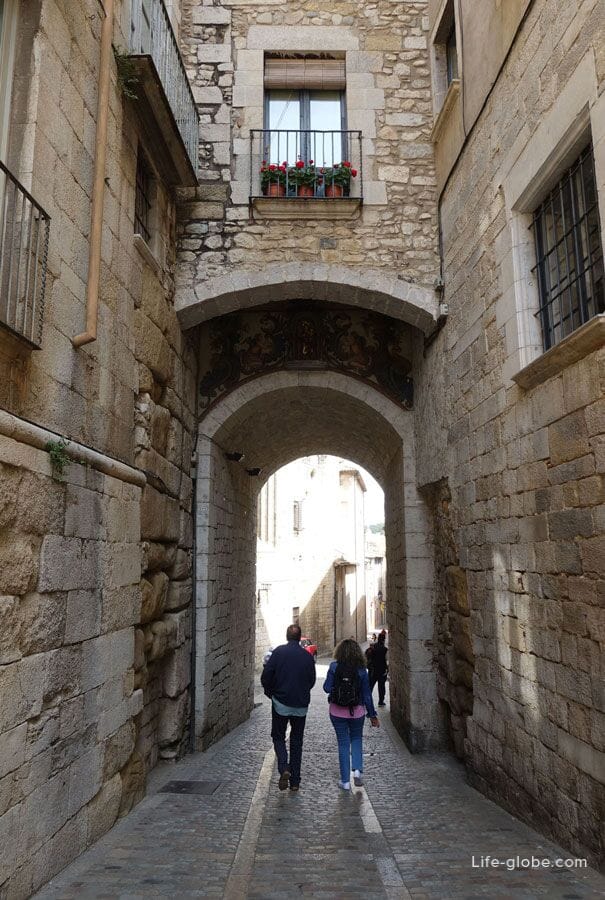
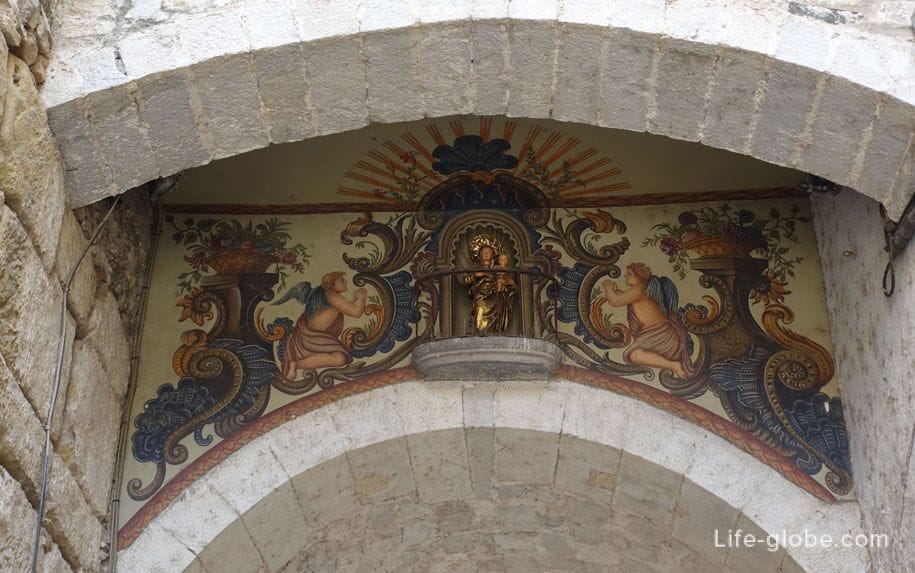
In the first century BC the Romans built a mighty fortress with an almost triangular perimeter (a kind of Acropolis), known as the Forca Vella. The fortress was well protected by a defensive rampart. It was the first urban strengthening, and it remained unchanged until the year 1000.
Part of the fortification, such as walls and the Gironella tower, still visible today in the Historic gardens ("gardens of the Germans" / Jardins dels Alemanys).
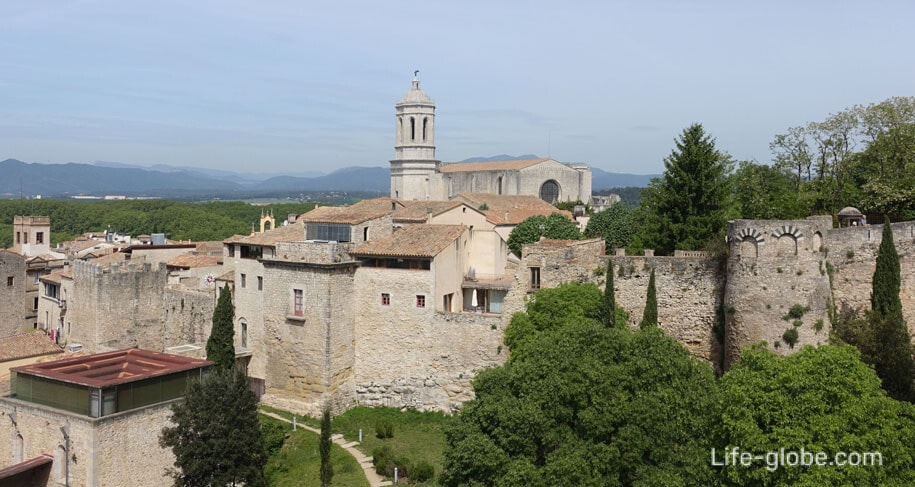
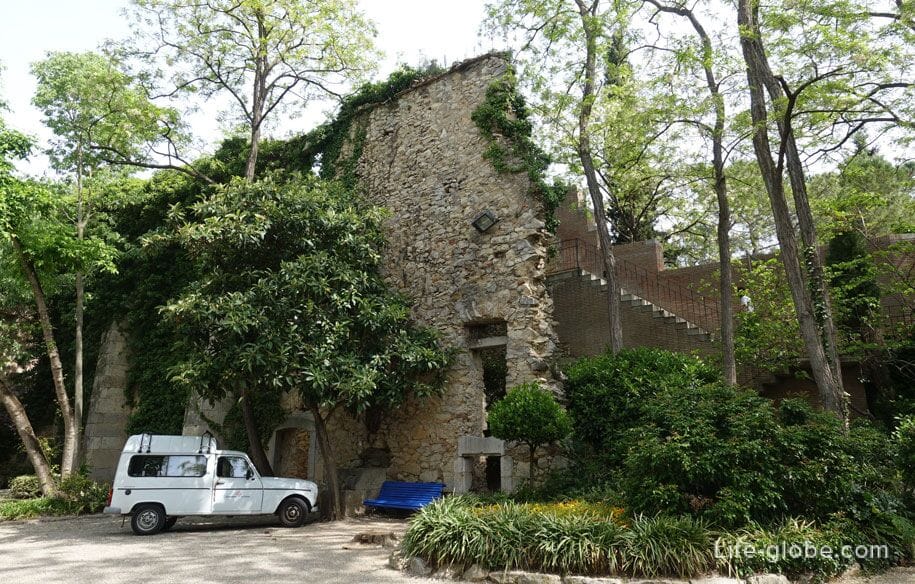
The streets of the district of Forca Vella
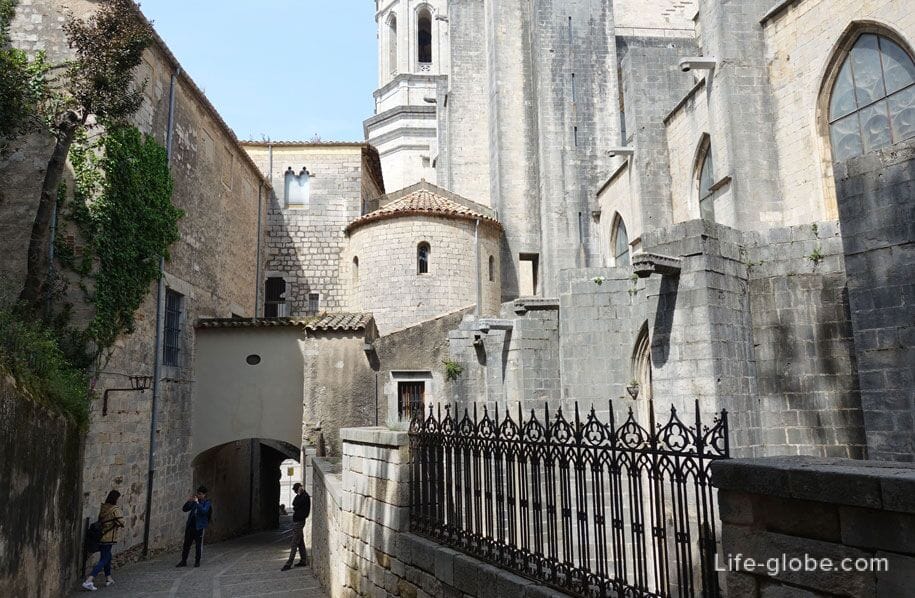
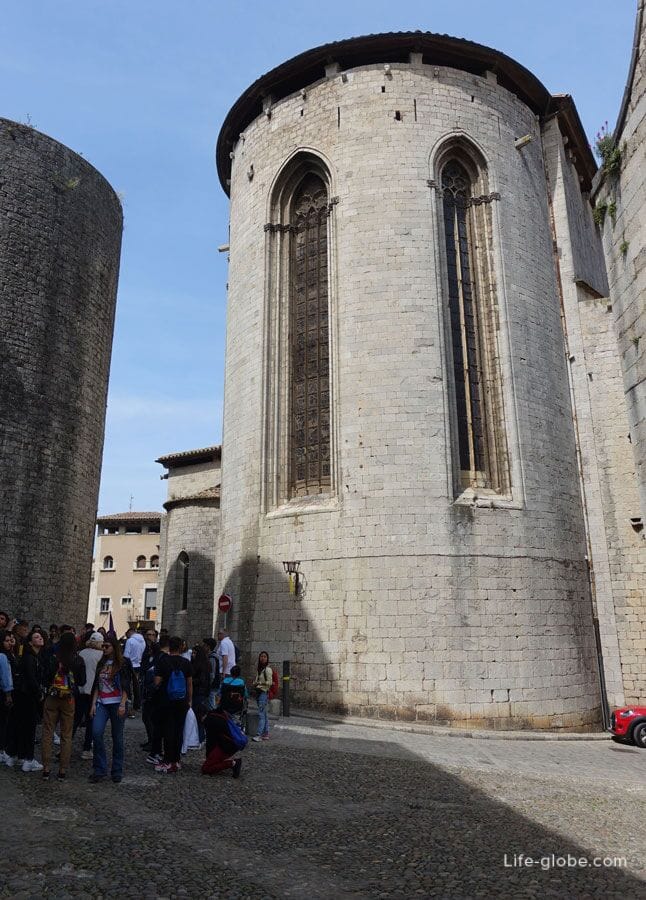
Behind the Cathedral lies the gardens of Frances (the French gardens / Jardins de La Francesa).
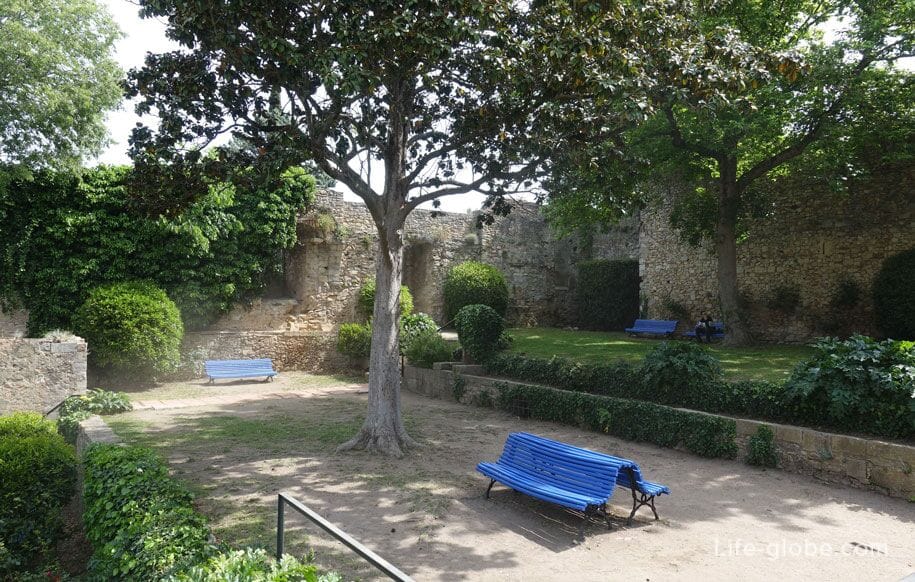
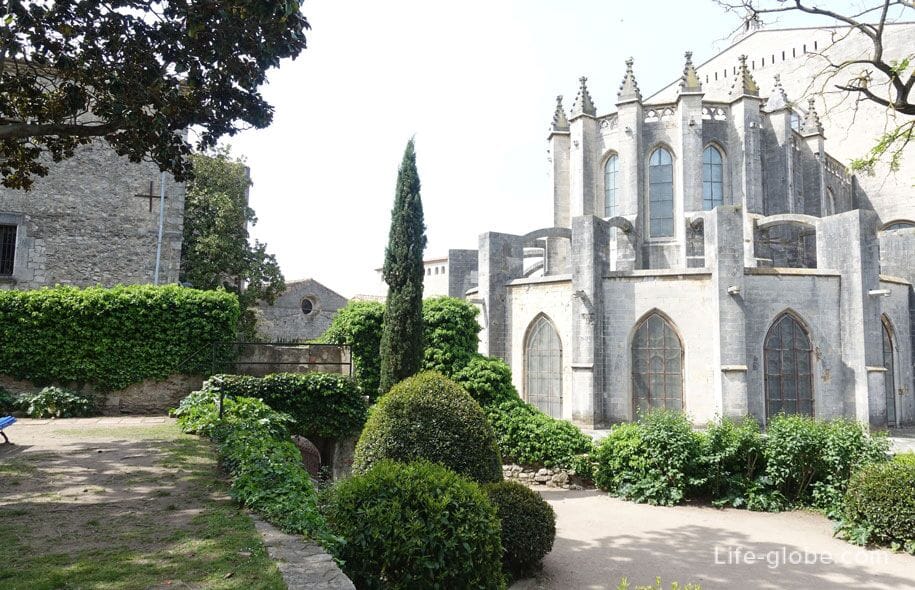
The gardens lead to the street San cristóbal (Carrer de Sant Cristofol), the eponymous gate, which forms part of walls of Girona and the eponymous chapel (Portal de Sant Cristofol and Capella de Sant Cristofol, 14 and 18 century).
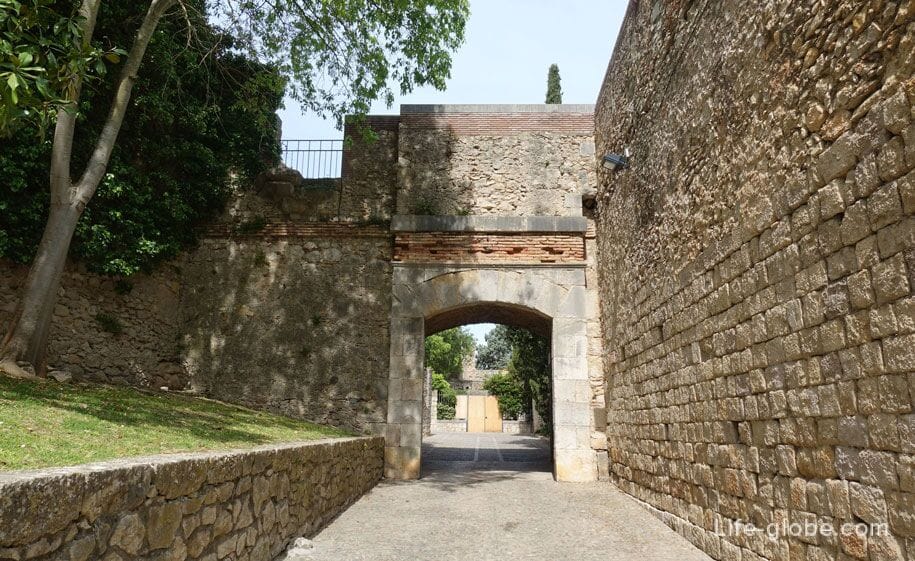
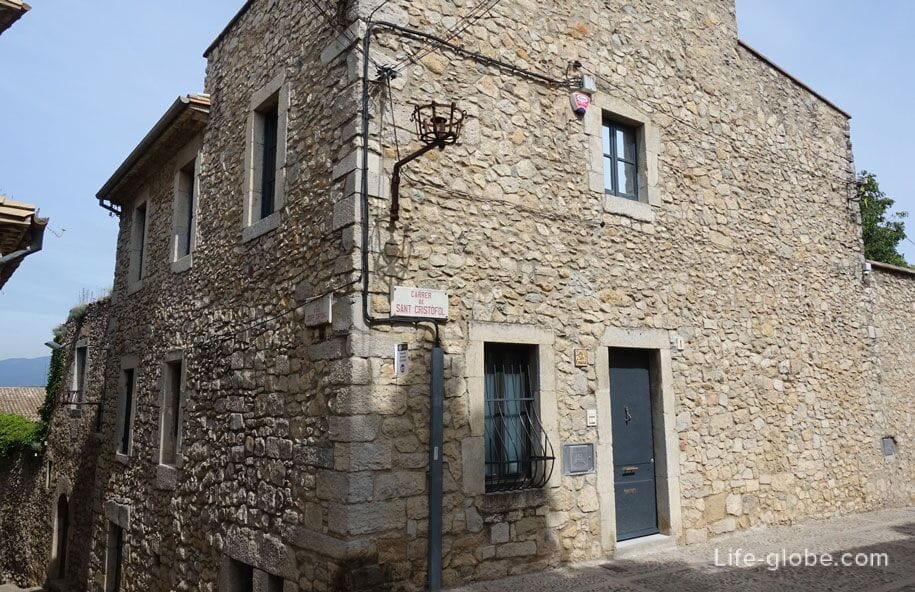
Or art Museum (Museu d'art de Girona), founded in 1976 and located in the former Episcopal Palace, Girona, near the Cathedral.
In the Museum you can trace the history in chronological order through successive epochs and styles: Romanesque, Gothic, Renaissance, Baroque, realism, art Nouveau and Docetism.
The Museum also houses a monographic room dedicated to ceramics, glass and art of the Catholic Liturgy, as well as halls for temporary exhibitions.
Cost of tickets: full - 4,5 euros; 65+ and students - 3.5 euros; children up to 16 years stay free of charge. On the first Sunday of each month admission is free.
The Museum can also be visited in combination with the Cathedral and Church of St. Felix.
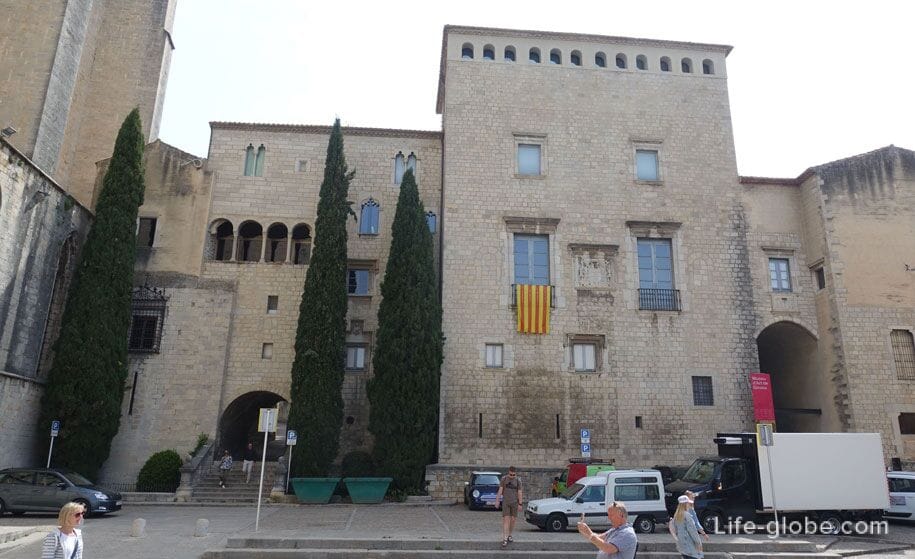
Or the Basilica of Sant Feliu (Sant Feliu de Basilica), the second, but not least, and no less beautiful, a Shrine in Girona.
The first Church in this place was built in early Christian times. In the present building has elements of Romanesque, Gothic and Baroque styles, predominantly the latter.
Before the construction of the Cathedral it was the Church of Girona.
The architecture of the Church is notable for the high austere bell tower of the 14th to 16th centuries and the original spire, which was rare in Spain.
The Church is known for its Roman and early Christian sarcophagi of the 3rd and 4th centuries, the Gothic tomb of Narcissus Girona, which, according to tradition, was one of the early bishops of the see, and as the product of the "Lying Christ" (14th century) sculptor Aloi de Mobra.
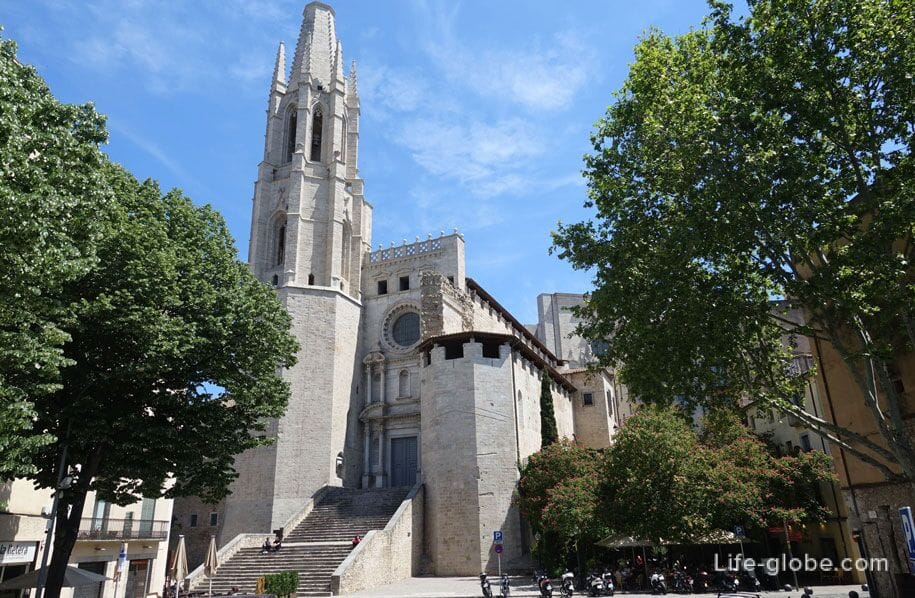

The main facade of the Church of Sant Feliu, to the main entrance which leads to elegant staircase, overlooking the square of Sant Feliu (Sant Feliu, Placa de street Calderers).
The area is notable for the fact that it is the most famous sculpture Girona - sculpture "Girona Lioness" (La Lleona), which are so fond of kissing ass.
Originally a Romanesque stone sculpture was found in Girona and dated to the 11th century. In the next sculpture is called "the Lioness". Currently, the original lioness is in the art Museum of Girona, whereas under the open sky for all to see the copy. Read more about sculpture "lioness Girona", customs and legends...

The Church of San Luke (Esglesia de Sant Lluc) is a good example of a simple Catalan Baroque.
The facade with a rectangular portal, an alcove with a ornament and a square bell tower with openings - subtle but notable differences of this Shrine.
Work on the construction of the Church began on 9 September 1724. The Church was consecrated on 5 Feb 1729.
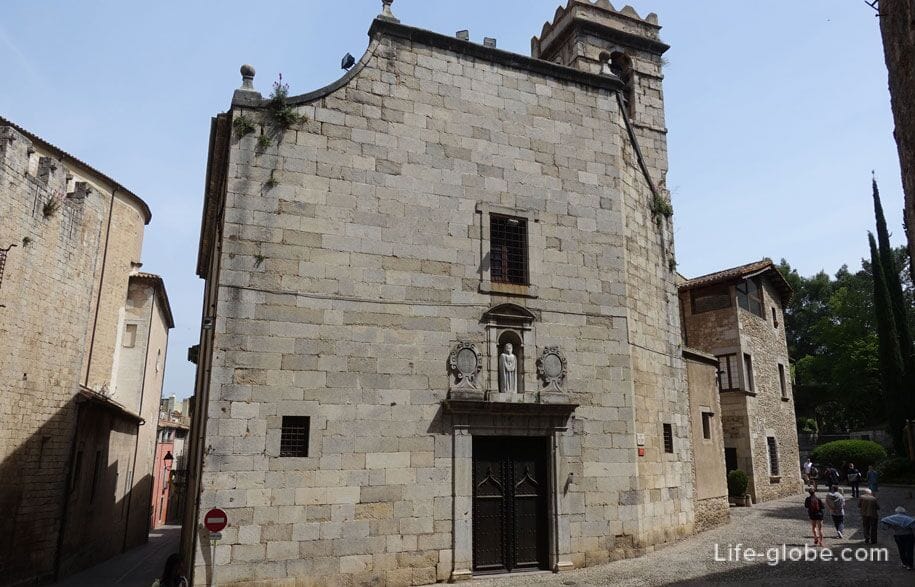
The so-called Arab baths (Banos arabes) is the unique building of the 12th century, built by the example of Roman baths and mimicking the structure of the Muslim baths.
The building functioned as bathrooms (baths, baths, baths) until it was closed in the 15th century. Since it passed into private hands. In 1618, the baths were purchased for the community of the Capuchin friars who used the space as a pantry, kitchen and Laundry. During the nineteenth century, the term "Arab baths" became popular to refer to the building. In 1929, the baths became public domain and were restored, now a Museum.
The most outstanding elements of the baths are: the entrance, which was used as changing rooms and relaxation areas and was closed the barrel vault, and the cupola covering the Central pool, which is supported by slim columns with decorated capitals.
Bathroom facilities were divided into five rooms: changing rooms, cold room, warm room, hot room, furnace and boiler.
Entrance fees: 2 euros - adults; 1 Euro for groups more than 15 people, students, people over 65, under 16 years, unemployed and disabled.
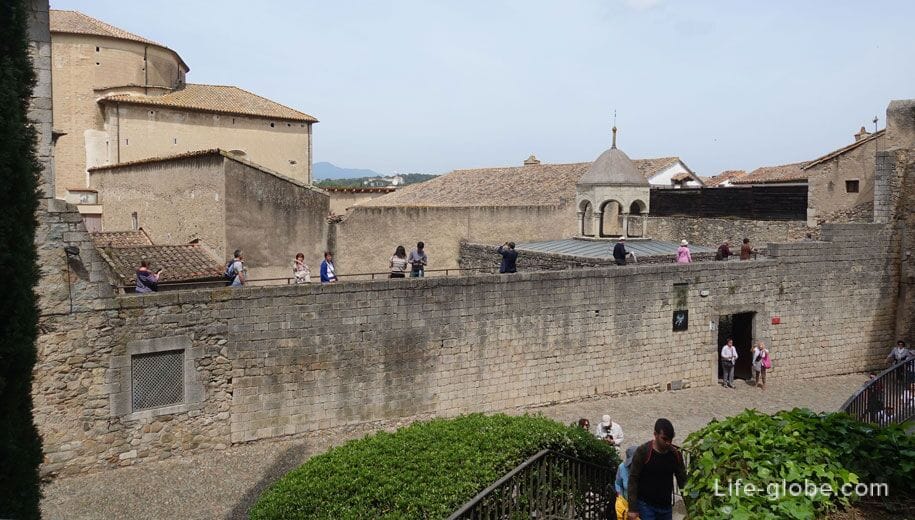
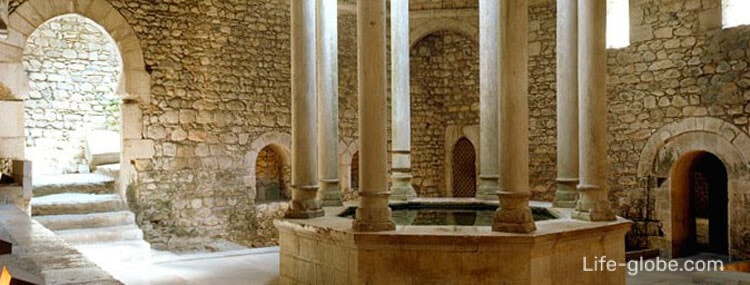
The monastery of Sant Pere de Galligans (Monestir de Sant Pere de Galligants) and St. Nicholas ' chapel (Capella de Sant Nicolau) is located in close proximity to each other and together constitute a single complex is one of the most striking examples of Catalan Romanesque art.
The monastery - temple, which is known that it already existed in the early 10th century.
From pre-Roman monastery was almost nothing left, although remains of the previous building. The construction of the present building was begun in the first half of the 12th century, about 1131.
Chapel of Sant Nicolau was built in the twelfth century, near the cemetery. At the turn of its history, the chapel has performed parish functions in the monastery of Sant Pere de Galligans.
Since 1857 the buildings houses the Archaeological Museum of Catalonia, with both permanent and temporary (changing) exhibitions. The cost of a full ticket - 6 euros, concessions 4 euros. Free admission the first Sunday of each month.
Photos of monastery of Sant Pere de Galligans
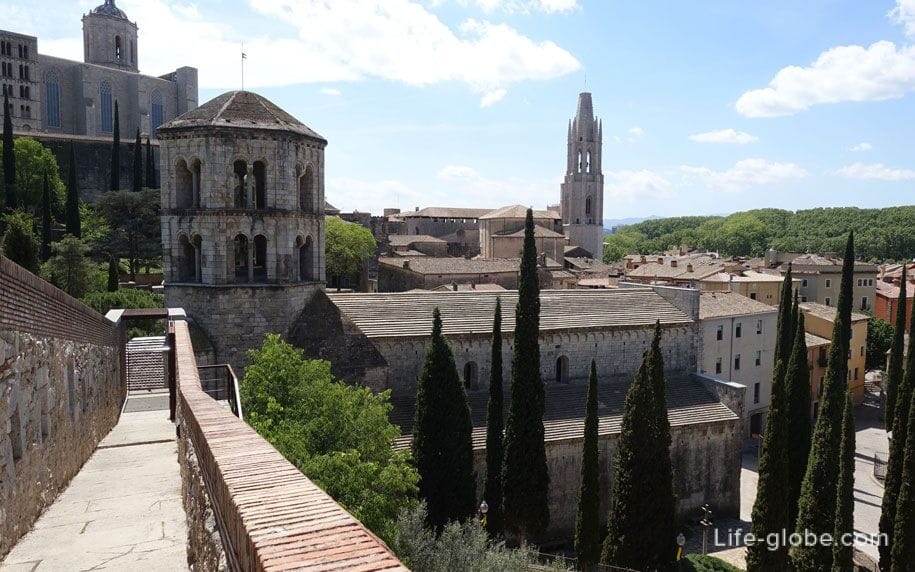
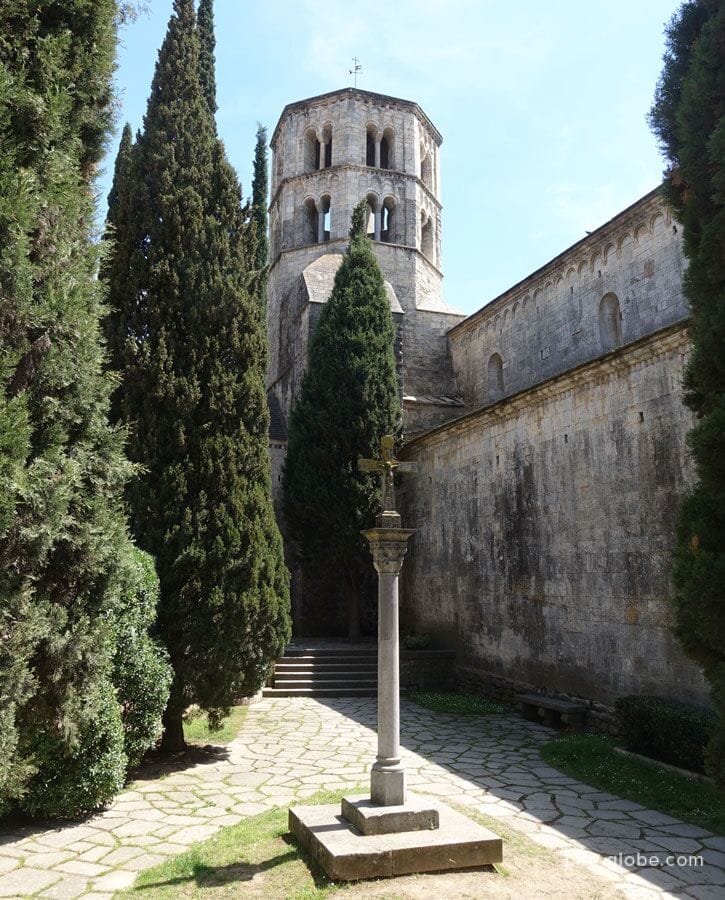
Photo of the chapel of St. Nicholas
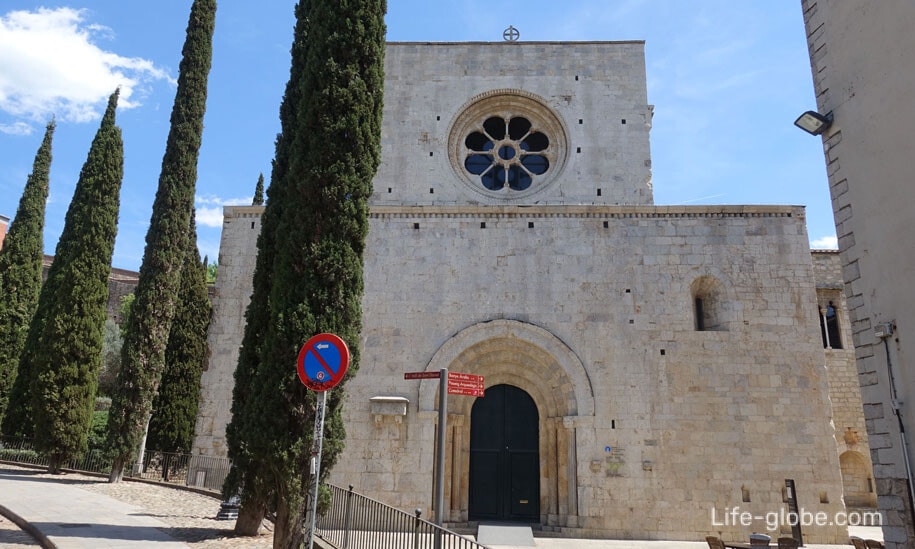
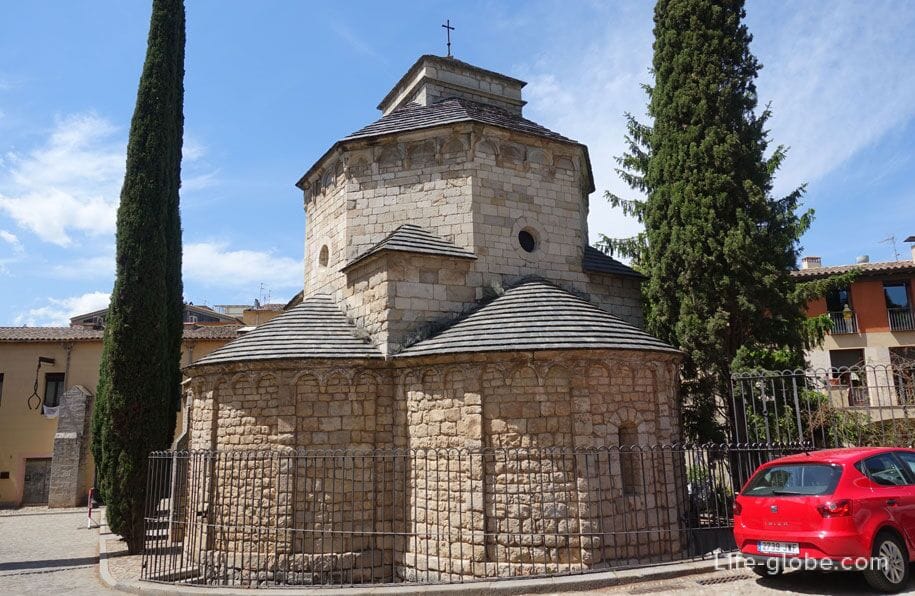
Gardens of Figueres (Figueras Jardins del Doctor), located behind the monastery of Sant Pere de Galligans and near the Arab baths, are the most extensive gardens of the old part of Girona.
The gardens are divided into several levels.
In the gardens: archaeological sites, places to stay, sculptures, old fountain and a small artificial pool.


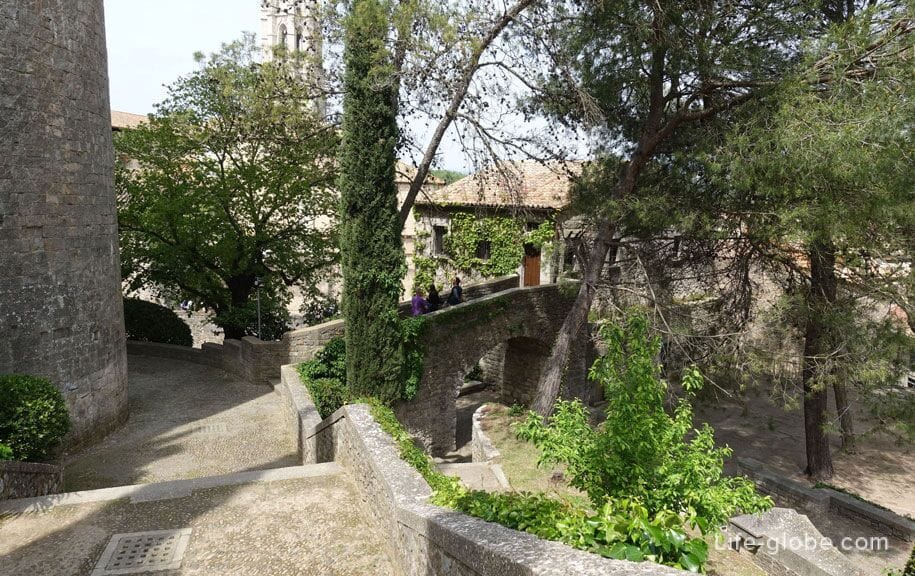
Santa Lucia Acosta (Santa Llucia Sacosta) is situated near the Northern part of the Girona wall.
Originally it was fairly primitive little Church. With expansion in the 16th century, the Shrine became a Church square in shape with three naves separated by cylindrical columns.
The bell tower, destroyed by lightning, was restored in the 19th century with the addition of the upper narrow part in the art Nouveau style. The bell tower of the Church is well visible from some points in the Northern part of Girona's old town and from the wall.

View of the Church tower from Girona wall
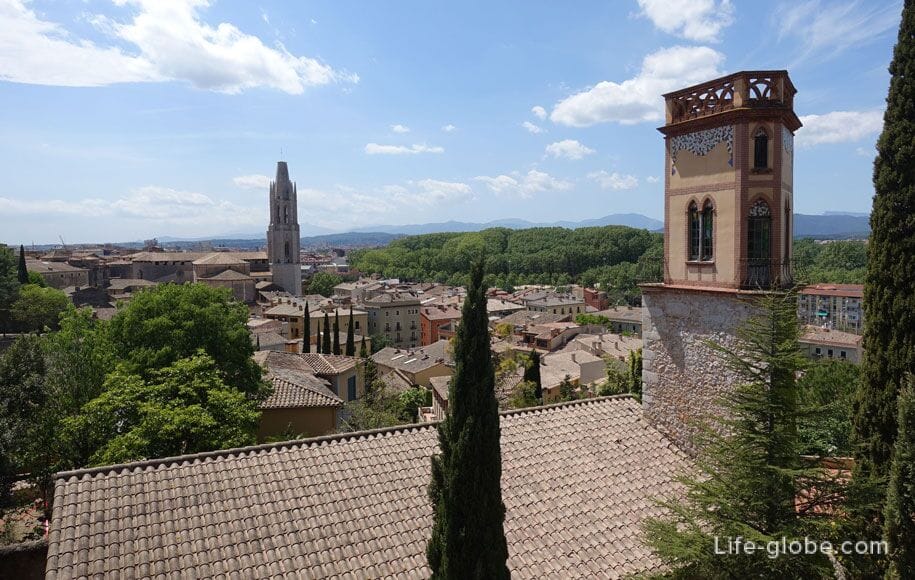
Space of coal and tanks of the Girona history Museum (Museu d Historia de La carbonera Girona) is located in the oldest part of the monastery of Sant-Antoni-de-Agua, of the Capuchin friars (1753 and 1762), at Carrer de la Forca, 27.
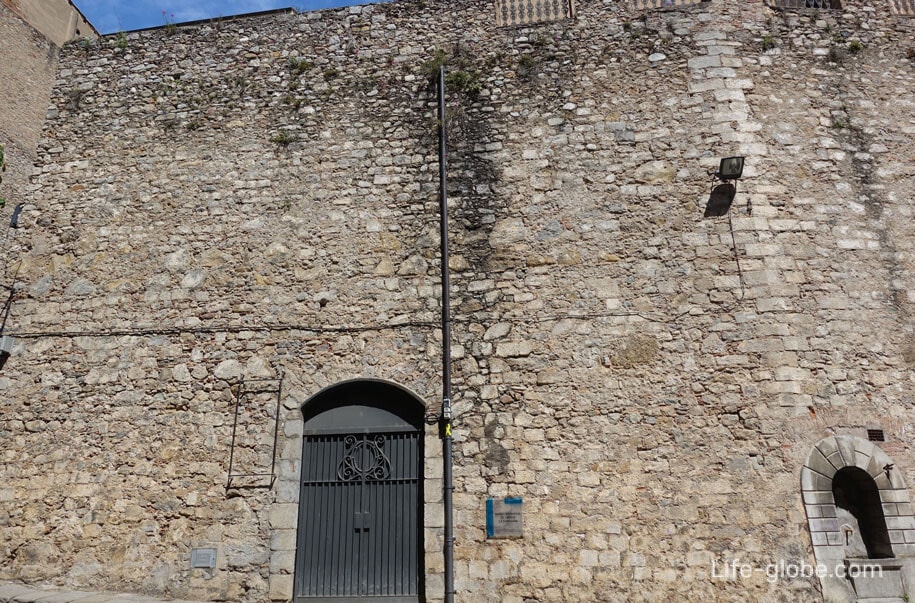
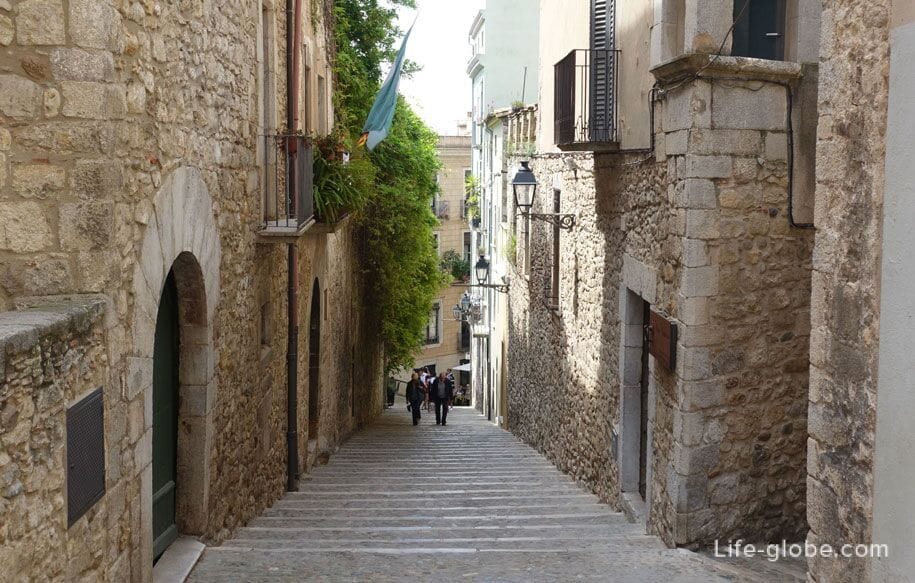
Street ascent to the Cathedral (Pujada de la Catedral) is remarkable:
- a bronze monument to the craftsmen, to the builders of Girona Cathedral (Monument Constructors de la Catedral de Girona), established in 1986.
A monument conceived as a kind of monument (tribute), the back of which is an abstract human figure representing the master works; it is symbolic of the hand of the master works. The skirt shows a plant of Girona Cathedral.
The monument is intended to recall the discussion about the risk of the construction of the Church with only one nave, while maintaining the old Romanesque Basilica inside;
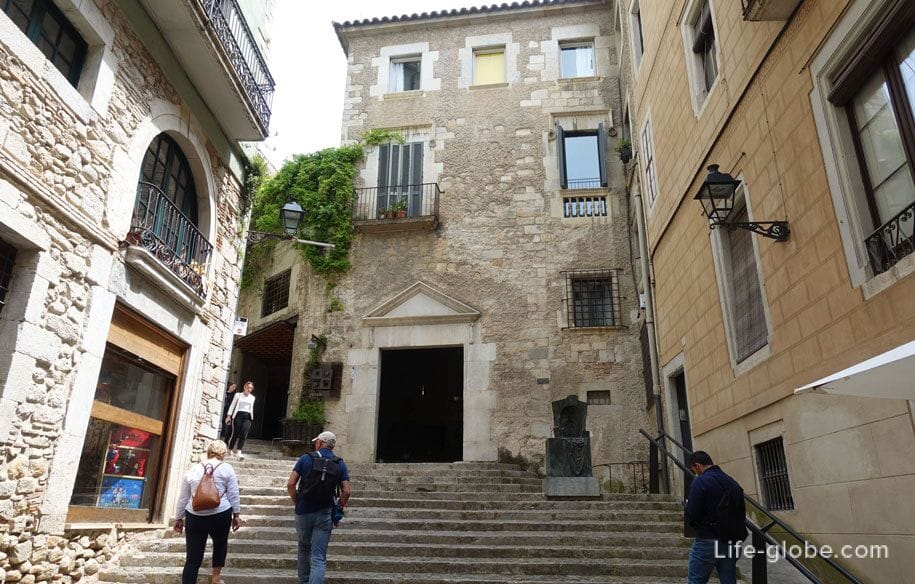
- the building of Pavonia (La Pabordia), in which are preserved the remains of the old rooms-baths.
Perhaps at the end of the fourteenth century the house was extended, and was created a courtyard. In the eighteenth century were made the extension.
The northernmost part Pabodie was used for baths. The staircase, which remains interrupted, probably became such in the process of creating a garden in the building.
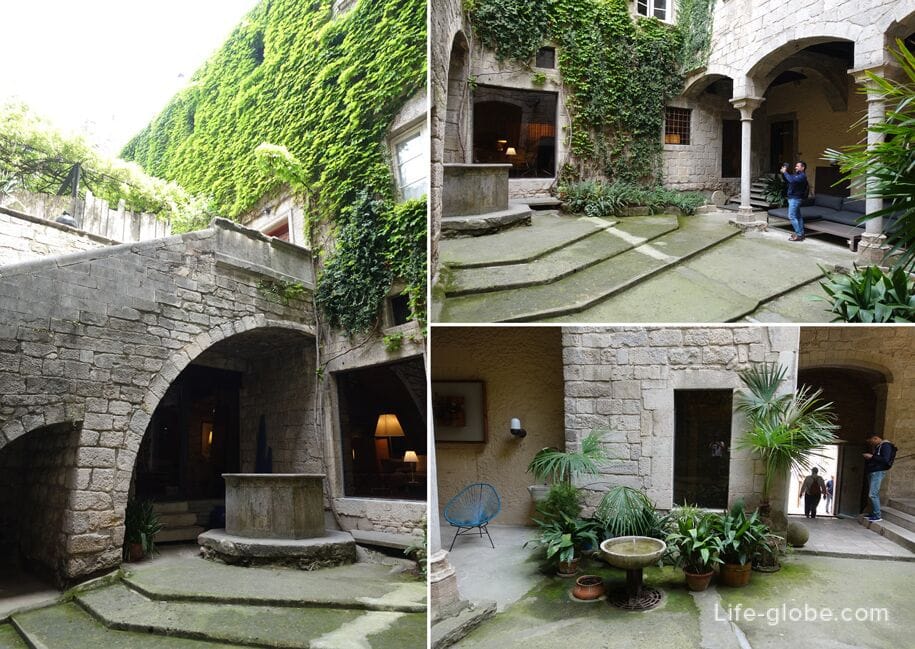
Jewish quarter El Kal or Call (El Call jueu / Jewish Quarter) represents some remnants of the historic Jewish community of Girona, located in the city centre until their expulsion.
Quarter Call located in the alleys of medieval streets.
The quarter consists of a few narrow streets and patios that have maintained their medieval atmosphere. This is one of the best preserved Jewish quarters in the world, which clearly demonstrates the importance of Jewish culture in Girona.
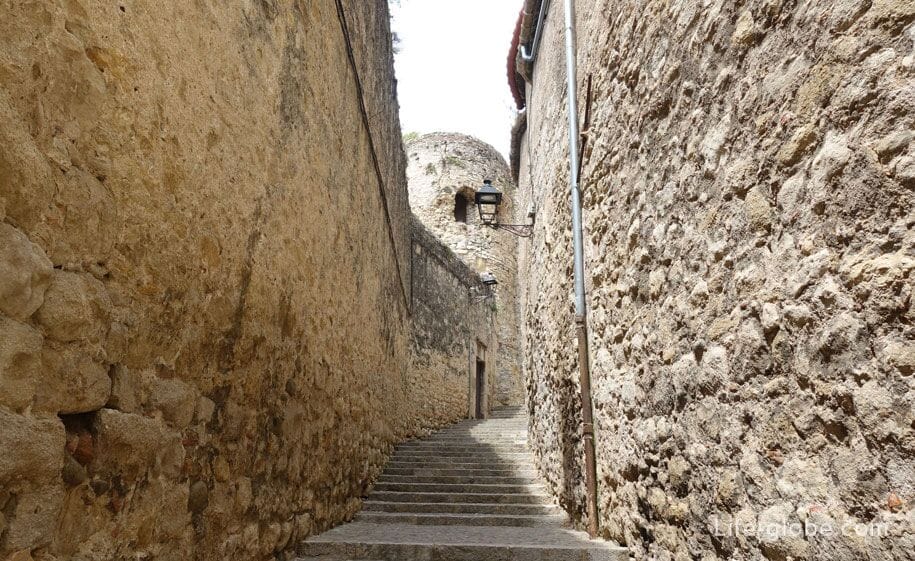
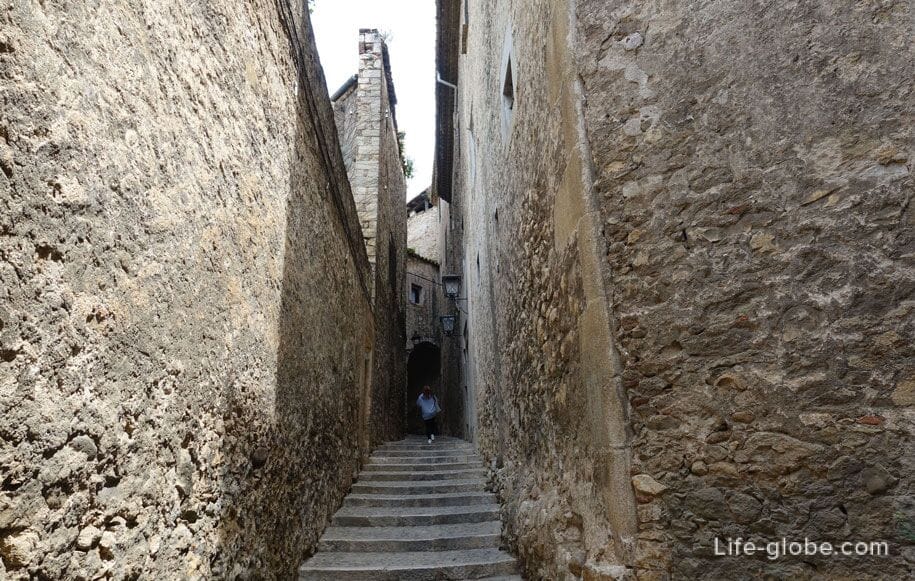


In the quarter, is a Museum of Jewish history in Girona (Museu d ' Historia dels Jueus), which was previously a Synagogue.
Admission: 4 euros, concessions 2 euros.
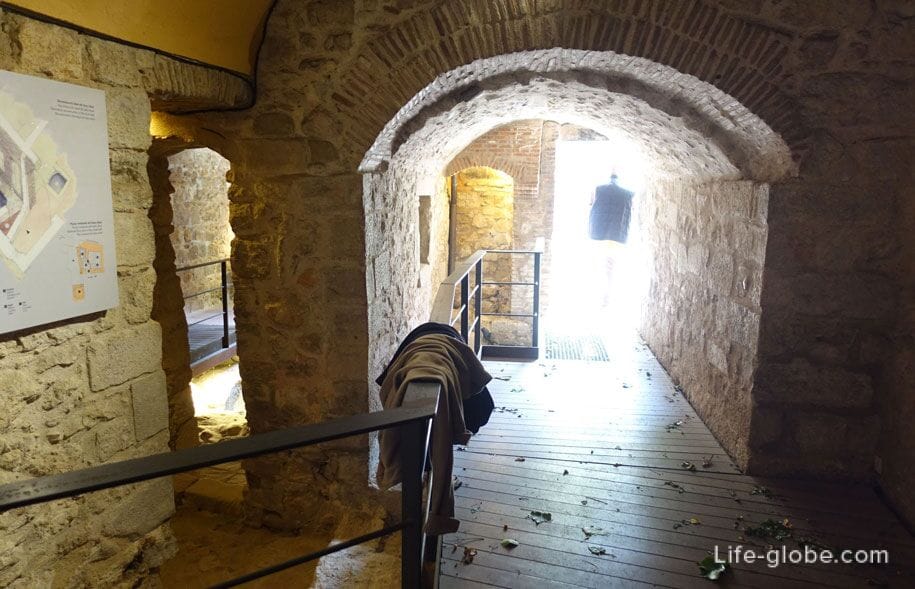
House Burgues (casa Burgues), 16th century.
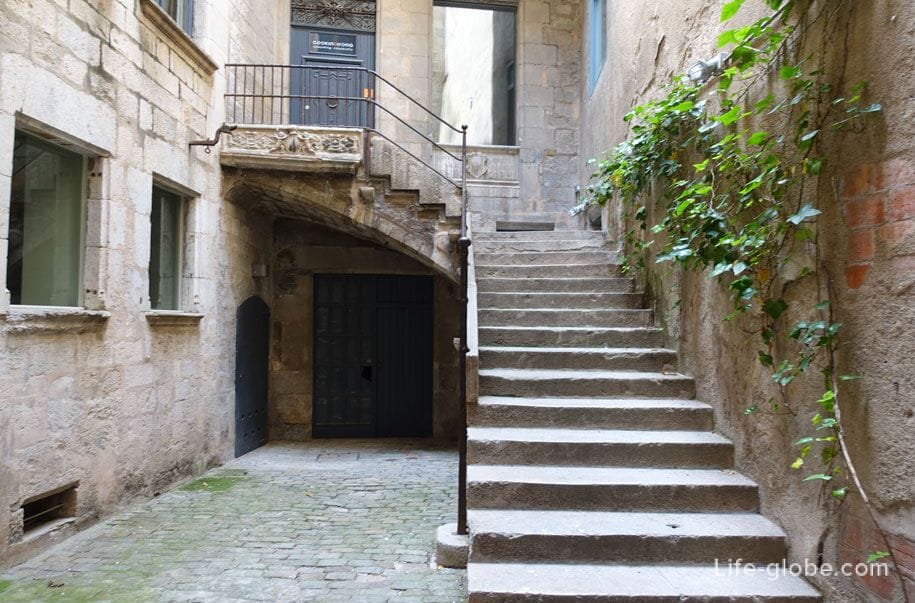
The monastery of St. Dominic or of Sant domènech (Convent de Sant Domenec) was founded in 1253 and was one of the first Gothic buildings in Catalonia.
His most notable features are the Church, the house and a large cloister.
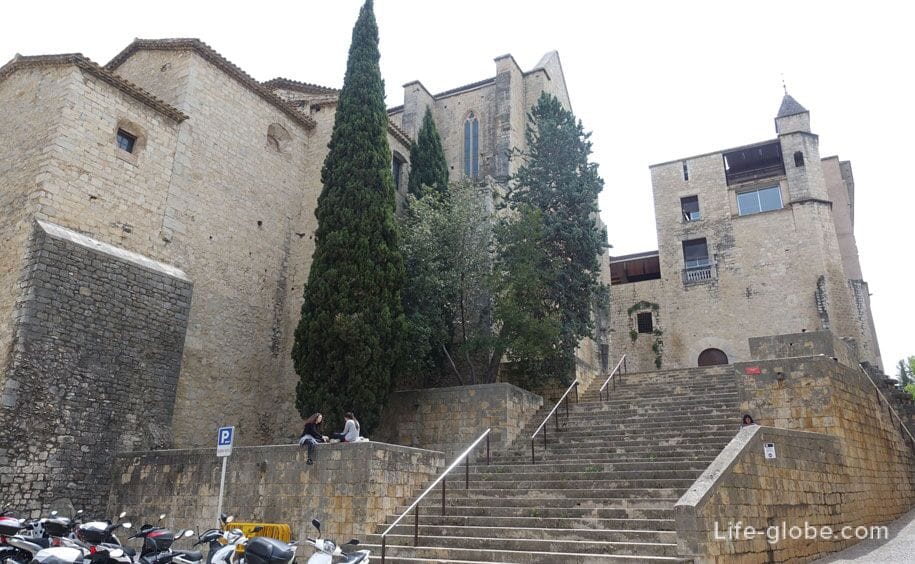
From Les Aligues (16th century) is preserved today only the facade of the building, which is a rare example of the Renaissance architecture in the city.
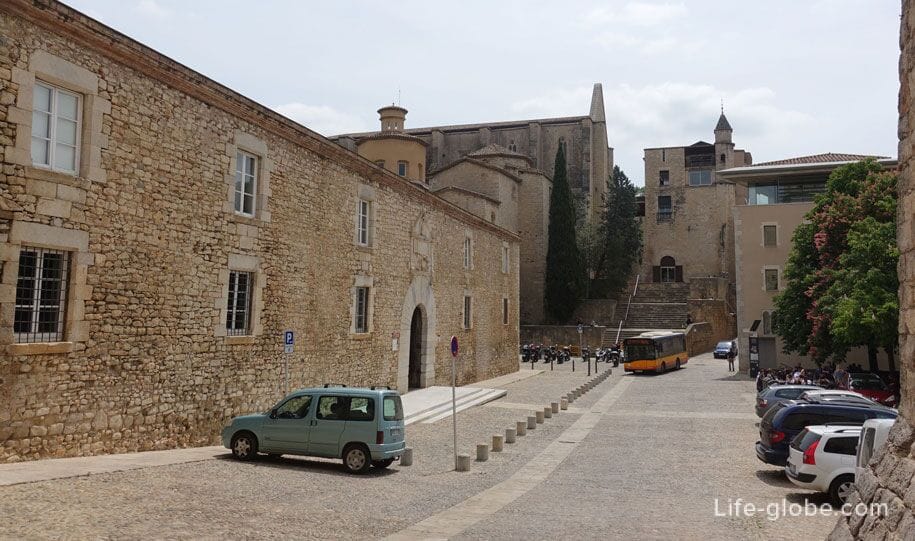
Monastery and Forest Algues are now the University of Girona.
View of the University and the monastery Dominica from the wall of Girona

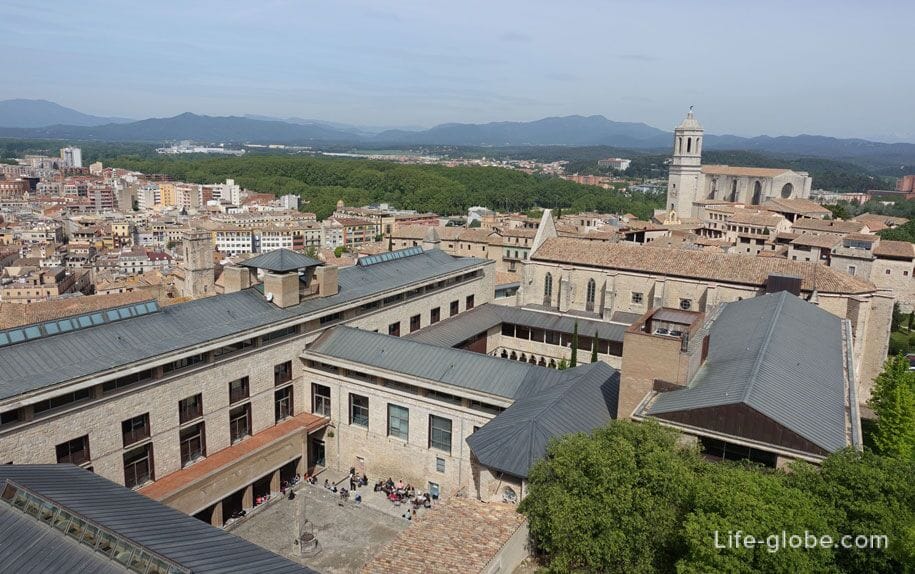
The Church of Sant martí Sacosta (Sant Marti Sacosta) with a facade in the Baroque style, is the basis of the surrounding space, including the stairs leading from the Church to Casa Palau of Agullana (Casa-Palau Agullana, 16th-17th century), provides one of the most unique images of the city with its covered, sloping arch.
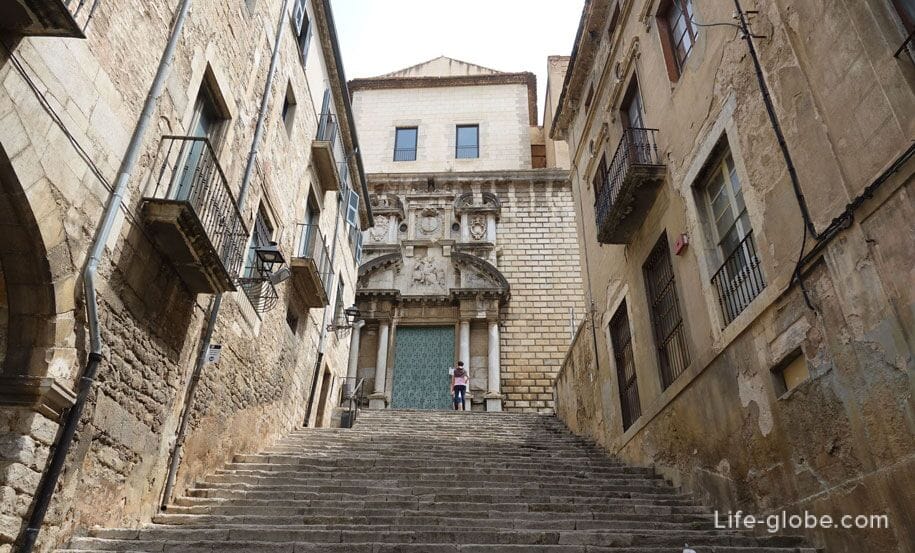

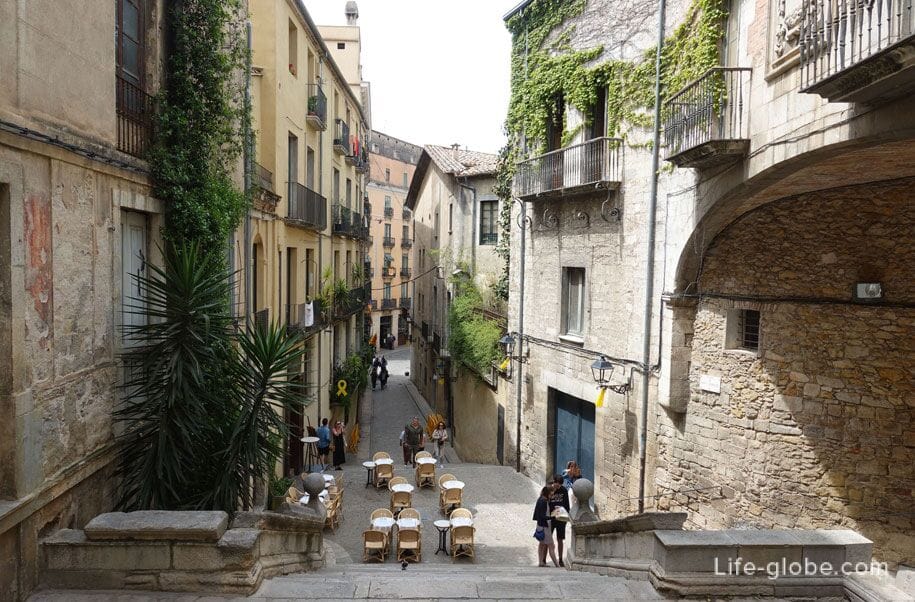

Near the Church Sacosta remarkable:
Church of Carmen (Iglesia del Carmen), 17-18 century;
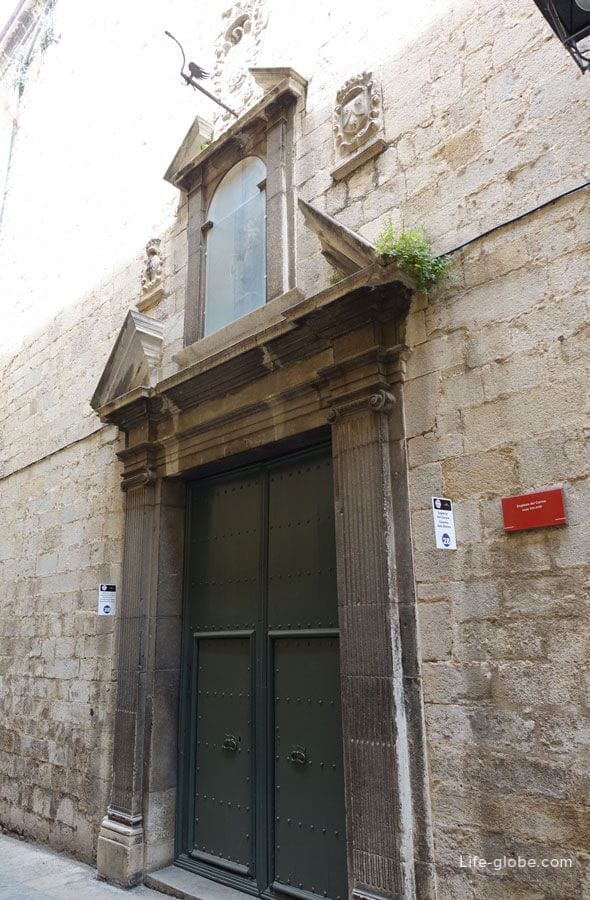
the Palace, now a cultural center CaixaForum Girona, which is an example of Catalan civil architecture of the middle ages.
Built on the Ciutadans street, the former artery of the city, the place of residence of noble families, he is widely known as the Fontana d'or.
Today the building is a place open to the public, which conduct exhibitions, conferences, educational events, seminars, etc.;
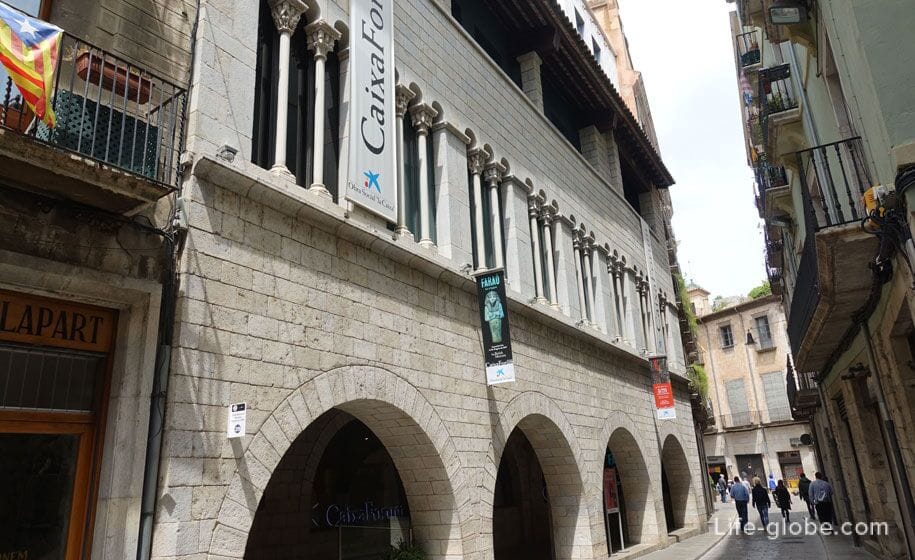
- the building of the historical archive of Girona (Arxiu Historic de Girona);
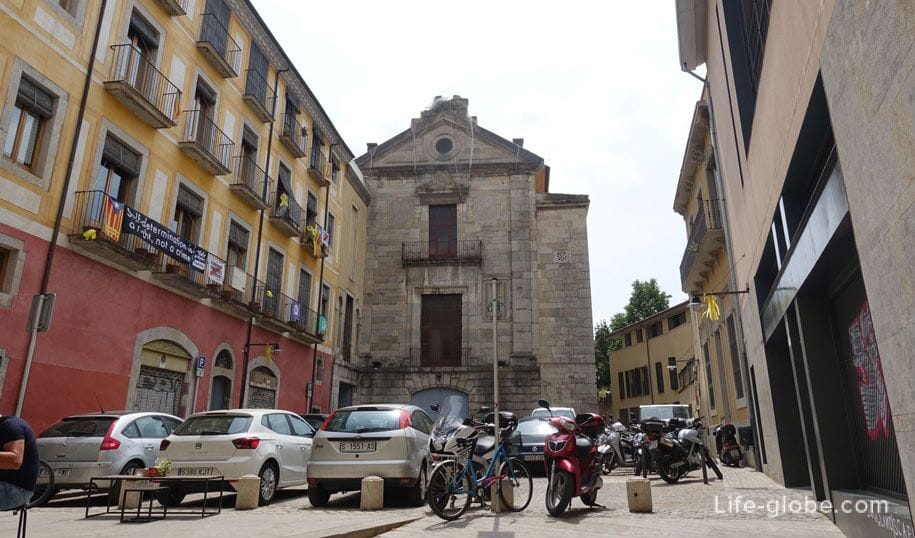
- the house of Rigau (Casa Rigau).
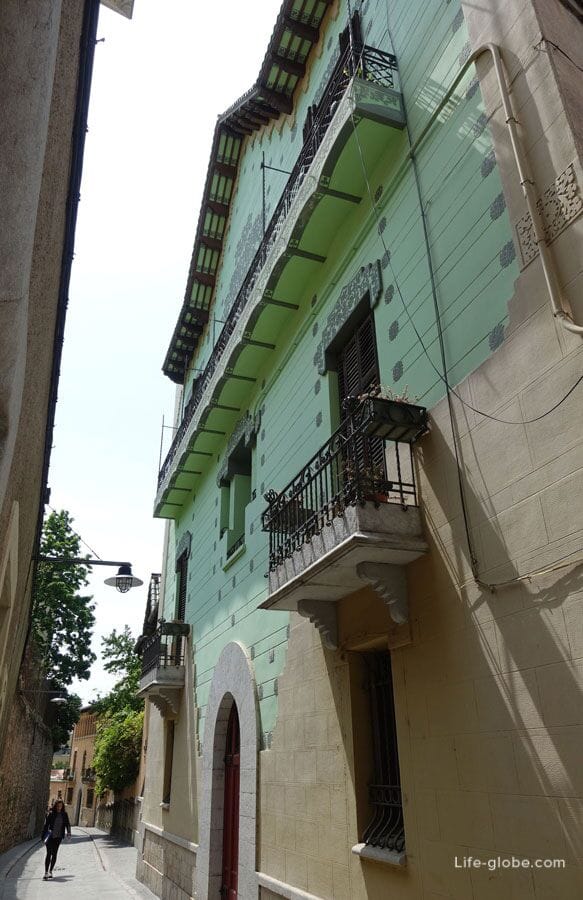
Church of the sacred Heart of Girona (Templo Expiatorio Del Sagrado Corazon) was built in 1886 in neo-Gothic style. The Church was initially run by the Jesuits, in 1951 he transferred to the Dominicans.
The main facade of the Church hastwo high square tower and bell tower, giving the Shrine of monumentality and making it visible from afar; high arched entrance, over which is a large rose window.
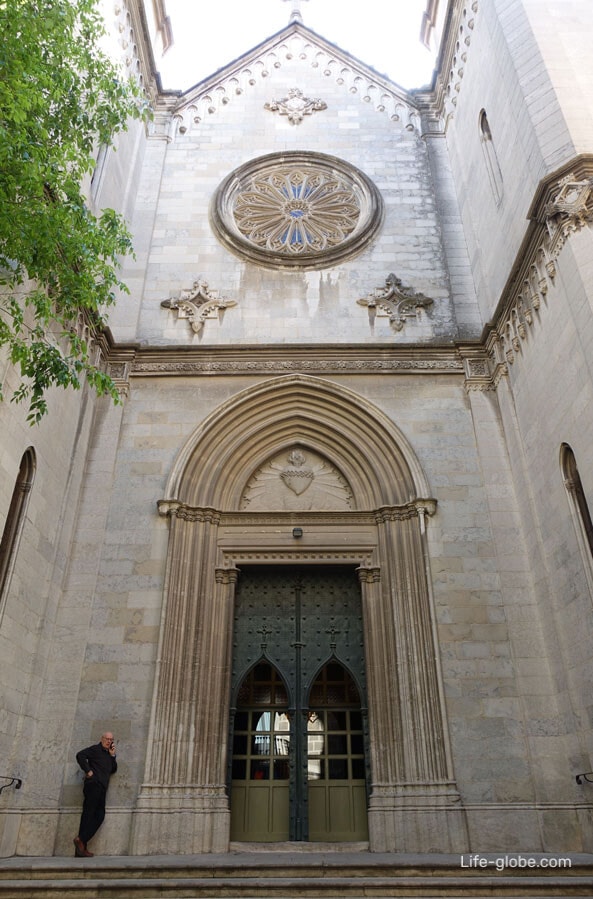

The inner space of the Church has a rectangular plan, separated by ribbed columns. The interior features high arches and neo-Gothic altar.

Piazza dei VI (Placa del Vi) adjacent to the "Girona Rambla" and surrounded by arcades, the so-called Palau del General (Palau del General) - Gothic-Renaissance building that housed the Catalan government administration of Girona in the 16th and 17th centuries.
Within the square is also notable: city hall and municipal theater of the 19th century, which is one of the most interesting in Catalonia.

Underground shelter (Jardi de la Infancia Refugi antiaeri) was built in 1938 during the civil war in Spain (1936-1939 years) in response to the air raids, which for the first time in history systematically carried out against the civilian population in the combat zone.
The shelter was constructed of reinforced concrete and originally covered with an earthen embankment height of 2 meters. It was designed to withstand direct impact of bombs weighing up to 100 lbs. and to provide protection from air strikes over 600 is there.
The refuge is located in the southern tip of the old quarter of Girona, near the fortress walls.
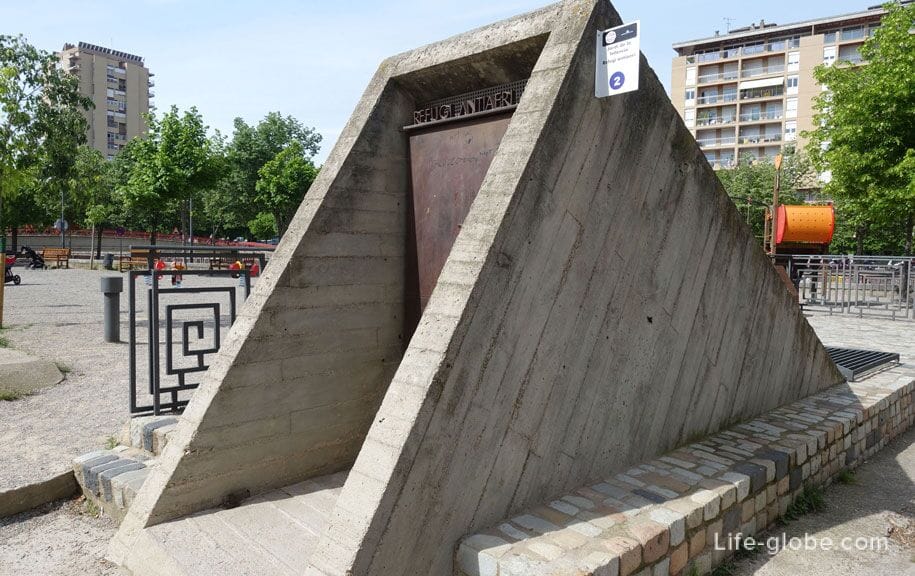

All accommodation in Girona, including in the old town "Barry vel", you can view and book here


